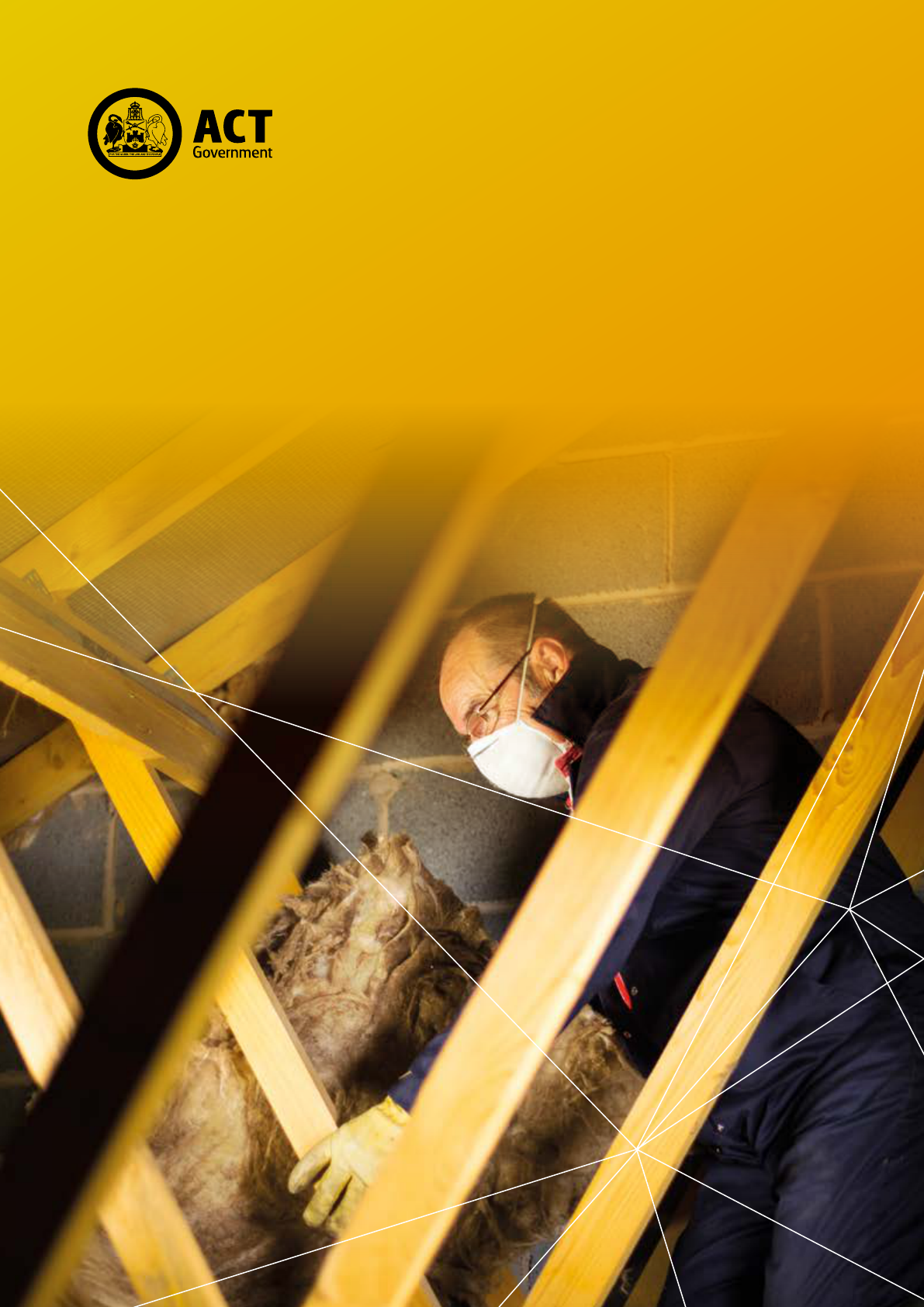
ACT ENERGY EFFICIENCY
IMPROVEMENT SCHEME (EEIS)
STAKEHOLDER CONSULTATION PAPER – PROPOSED NEW
RESIDENTIAL INSULATION AND VENTILATION OPENING
SEALING ACTIVITIES
JANUARY 2019

© Australian Capital Territory, Canberra 2019
This work is copyright. Apart from any use as permitted under the Copyright Act 1968,
no part may be reproduced by any process without written permission from:
Director-General, Environment, Planning and Sustainable Development
Directorate, ACT Government, GPO Box 158, Canberra ACT 2601.
Telephone: 02 6207 1923
Website: www.planning.act.gov.au
Developed for the EEIS by Common Capital and Energy Eicient Strategies Pty Ltd
Accessibility
The ACT Government is committed to making its information, services, events and
venues as accessible as possible.
If you have diiculty reading a standard printed document and would like to
receive this publication in an alternative format, such as large print, please phone
Access Canberra on 13 22 81 or email the Environment, Planning and Sustainable
Development Directorate at [email protected].au
If English is not your first language and you require a translating and interpreting
service, please phone 13 14 50.
If you are deaf, or have a speech or hearing impairment, and need the teletypewriter
service, please phone 13 36 77 and ask for Access Canberra on 13 22 81.
For speak and listen users, please phone 1300 555 727
and ask for Access Canberra on 13 22 81.
For more information on these services visit http://www.relayservice.com.au
PRINTED ON RECYCLED PAPER
PROVIDING
YOUR FEEDBACK
THE ACT GOVERNMENT IS SEEKING YOUR FEEDBACK VIA SURVEY MONKEY
BY CLOSE OF BUSINESS 1 MARCH 2019.
A stakeholder forum will be held in Canberra on Thursday 14 February 2019 to discuss new EEIS
activities. Interested parties should register their interest using the contact details listed below.
SUBMIT YOUR FEEDBACK ONLINE AT: https://www.surveymonkey.com/r/GWRZ2LV
STAKEHOLDER CONSULTATION PAPER 3
CONTENTS
1. EXECUTIVE SUMMARY ..........................................................5
2. BACKGROUND .......................................................................7
3. SCOPE OF THIS UPDATE ......................................................9
4. ELIGIBLE ACTIVITIES DETERMINATION ........................ 11
4.1 Ceiling Insulation (Activity 1.8) ................................... 11
4.1.1 Activity Definition ........................................................11
4.1.2 Minimum activity performance specifications ..... 12
4.1.3 Installed product requirements ...............................13
4.1.4 Calculation of Abatement Factor .............................14
4.2 Under-floor Insulation (Activity 1.9) .......................... 15
4.2.1 Activity Definition ........................................................15
4.2.2 Minimum activity performance specifications ......15
4.2.3 Installed Product Requirements ..............................16
4.2.4 Calculation of Abatement Factor .............................17
5. RISK ANALYSIS ..................................................................... 21
5.1 Proposed Risk Treatment Strategies ........................ 21
5.1.1 Risk 1 - Installer workplace health and safety ......21
5.1.2 Risk 2 - Installer electrocution ...................................23
5.1.3 Risk 3 - House fire and other property damage ...23
5.1.4 Risk 4 - Non-compliant installation and
improper installer practice ........................................ 23
5.1.5 Risk 5 - Poor risk identification and unclear
governance and RISK 6 - Lack of industry
capacity or involvement ........................................... 24
5.1.6 Risk 7 - Lack of consumer participation .................24
5.2 Stakeholder feedback on the Meta Risk Review .... 24
6. PROPOSED ELIGIBLE ACTIVITIES CODES OF PRACTICE
(CEILING AND UNDER-FLOOR INSULATION) ................. 25
6.1 Competency requirements ......................................... 25
The role of the independent auditor ................................28
Training and competency requirements .........................28
6.2 Minimum Performance Specifications ..................... 29
6.2.1 Referencing current insulation standards .............. 30
6.2.2 Additional requirements specific to insulation
practice .................................................................................... 31
6.2.3 Pre-installation risk inspection
by Licensed Electrician ........................................................32
6.2.4 Risk assessment and electrical
safety by insulation installers ............................................35
7. PROPOSED RECORD KEEPING AND REPORTING
CODE OF PRACTICE (CEILING AND UNDER-FLOOR
INSULATION) ........................................................................ 37
7.1 Items to be recorded ................................................... 37
7.2 Harmonisation with other Schemes ........................ 39
8. PROPOSED ELIGIBLE ACTIVITIES AND RECORD
KEEPING AND REPORTING CODES OF PRACTICE
(VENTILATION OPENING SEALING) ................................ 41
8.1 Competency requirements ......................................... 41
8.2 Minimum activity performance specifications ....... 42
9. APPENDIX – KEY SOURCES ............................................... 45
9.1 References ..................................................................... 45
9.2 Insulation Related Training ........................................ 45
9.3 Insulation Technical, Economic Cost/Benefit
Studies and Residential Insulation Data ...................46
9.4 Building Sealing - Ventilation Opening Sealing ..... 46
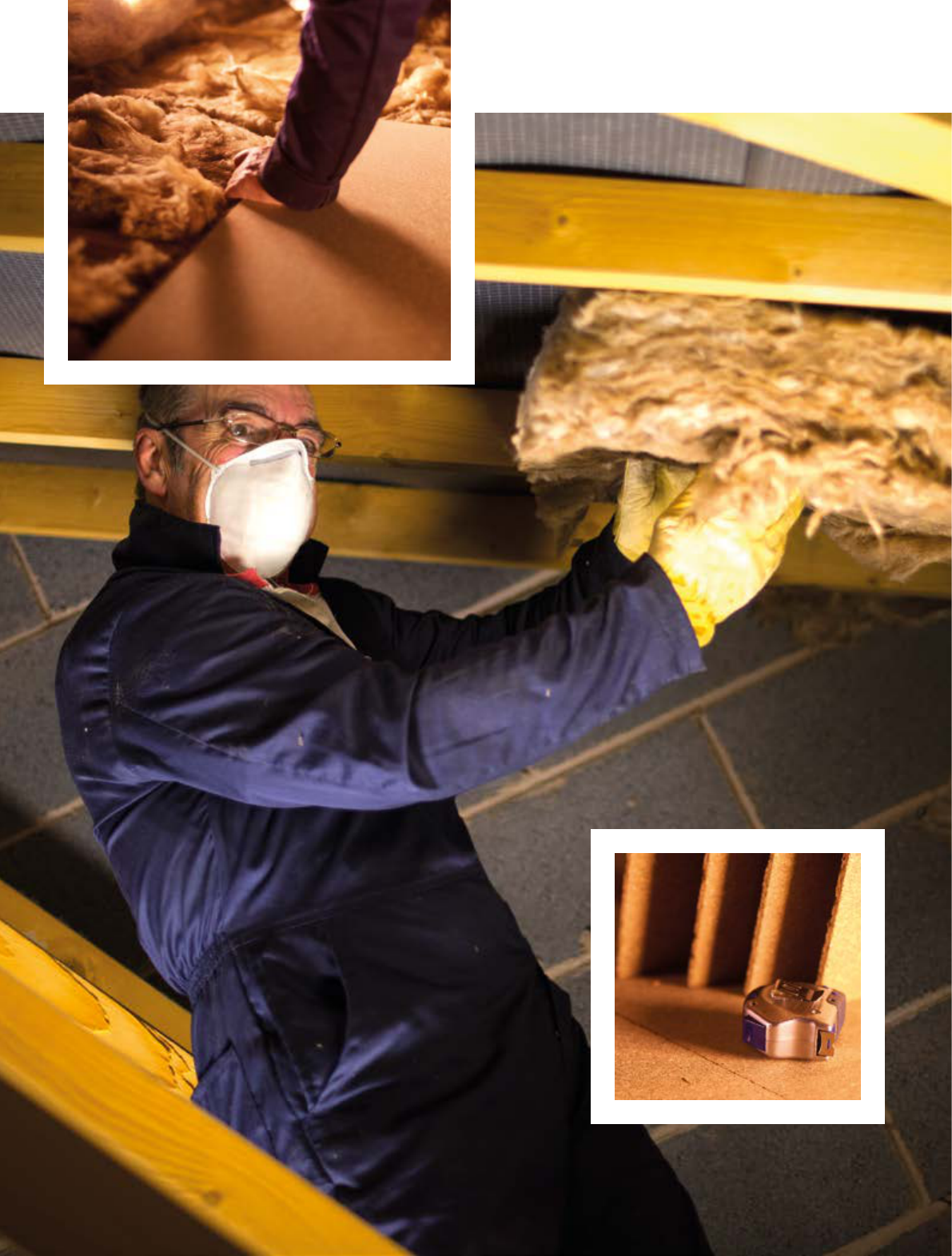

STAKEHOLDER CONSULTATION PAPER 5
1. EXECUTIVE
SUMMARY
The Energy Eiciency Improvement Scheme (EEIS) proposes to add
residential insulation activities to its list of activities that help Canberra
residents save energy and money.
This report provides an overview and rationale for the proposed activities
and presents the dra codes of practice. You are invited to give feedback via
an online survey. Your feedback will inform the final dras of the codes of
practice of these new EEIS residential insulation activities.
Insulation has been identified by EEIS stakeholders as a priority because:
→ a significant percentage of ACT houses built prior to minimum insulation
standards in 1992 have no or insuicient ceiling insulation
→ merging ceiling insulation and underfloor insulation activities are forecast
to deliver significant energy bill savings over 25 years
→ low income households, that pay a much higher proportion of their income
on energy than higher income households, will benefit in particular
→ studies show insulated houses have positive health outcomes for adults
and children
→ using less energy, particularly gas, will reduce greenhouse gas emissions.
The report provides details on:
→ the proposed activities—ceiling insulation and under-floor insulation,
drawing on dras previously presented to stakeholders in 2017;
→ the dra codes of practice for the proposed activities.
Any potential risks of installing insulation have been addressed by the
independent EEIS Residential Insulation Risk Management Report, following
targeted consultation with industry experts and other jurisdictions in 2017
and 2018. This consultation paper was informed by the independent EEIS
Residential Insulation Risk Management Report which assessed risks and
recommended risk treatments to ensure proposed new EEIS insulation
activities can be delivered safely.
These insulation activities will implement all the safety recommendations
from the Report of the Royal Commission into the Home Insulation Program,
such as no foil products, training and accreditation of insulation installers, de-
energising the home before the installation, pre electrical safety inspections
by licensed electricians and post installation audits by independent auditors.

6 ACT ENERGY EFFICIENCY IMPROVEMENT SCHEME (EEIS)
Under EEIS, retailers choosing to deliver insulation activities will be required to contract the work to experienced,
reputable insulation companies with qualified installers. This removes any risk of inexperienced, untrained and
unaccredited installers undertaking the activity in the ACT.
The introduction of these insulation activities responds to EEIS stakeholder feedback to prioritise insulation and other
new EEIS activities (Figure 1).
Figure 1: Stakeholder forum (2016) recommendations for new EEIS activities
SOLAR SPACE
HEATER
TRANSPORT EVAPORATIVE
COOLER COVER
CONTROLLED
“SMART”
NATURAL
VENTILATION
SYSTEMS
AGGREGATED
METERED
BASELINES
COMMERCIAL
HIGH
EFFICIENCY
MOTORS
POWER
FACTORS
CORRECTION
NABERSCOMMERCIAL
HVAC
REFRIGERATOR
FANS
RESIDENTIAL
INSULATION
0
2
4
6
10
8
14
12
18
16
VOTING
WORKSHOP
FEEDBACK FORMS
Other work is underway to develop new EEIS “deemed” business and residential heating activities, and update a
selection of EEIS appliance activities. The ACT government is also continuing to explore integrated methods with the
NSW Energy Savings Scheme.

STAKEHOLDER CONSULTATION PAPER 7
2. BACKGROUND
The Energy Eiciency (Cost of Living) Improvement
Act 2012 (the Act) establishes the Energy Eiciency
Improvement Scheme (EEIS). EEIS commenced in 2013
and requires electricity retailers in the ACT to invest in
activities which help ACT energy customers save energy.
The Scheme also provides targeted assistance to low
income households through a 20% Priority Household
Target. The Objects of the Act are to:
→ Encourage the eicient use of energy,
→ Reduce greenhouse gas emissions associated with
stationary energy use in the Territory,
→ Reduce household and business energy use and costs,
and
→ Increase opportunities for priority households to
reduce energy use and costs.
An independent review of the EEIS, published on 13 July
2018, found the program has fulfilled its objectives with
a benefit to cost ratio of 4:1. The review recommended
extending the EEIS beyond 2020 to support further
energy cost and emissions reductions.
The Act is supported by legislative instruments
establishing Eligible Activities, Energy Savings Targets,
Energy Savings Contributions and comprehensive codes
of practice for delivering activities, audit and compliance,
reporting and record keeping. The proposed residential
insulation and ventilation opening sealing activities build
upon 23 existing energy eiciency activities
1
- including
building sealing, residential space heating and cooling,
hot water service, lighting and appliance activities.
There is a significant need for insulation in ACT houses
and the following reasons make a strong case for adding
new insulation activities to the EEIS:
→ A significant percentage of ACT houses built prior
to minimum insulation standards in 1992 have
insuicient ceiling insulation of R1.5 or less
2
. ICANZ
report
3
suggests a potential market for retrofitting
insulation activities is approximately:
> 13,000 ACT homes currently with no ceiling
insulation;
> 66,000 ACT homes needing top up ceiling
insulation
4
; and
> 27,000 ACT homes which currently have no
underfloor insulation.
→ The merged ceiling insulation and underfloor
insulation activities being proposed are forecast
to deliver significant energy bill savings for ACT
households over 25 years.
→ Better insulation will help reduce energy bills for low
income households, which pay up to five times as
much on energy costs, as a proportion of their income,
compared to high income households.
→ A Community Views Survey conducted by the ACT
Government in November 2018 shows that 17% of
homeowners are planning and likely to upgrade their
insulation. 50% of homeowners who were unlikely
or unable to upgrade their insulation said the main
barrier was cost and 83% of these respondents would
reconsider and invest in energy eiciency if there were
financial subsidies available.
1 http://www.environment.act.gov.au/energy/smarter-use-of-energy/energy_eiciency_improvement_scheme_eeis/how-the-scheme-works/eeis-activities
2 According to the National Housing Survey (p7) in 1994, 81,300 ACT households were built in the ACT pre1984.
3 ICANZ (2013) The Value of Insulation Based Residential Energy Savings – Pages 10-12 including Table 5 at http://icanz.org.au/wp-content/uploads/2013/04/The-Value-of-
Insulation-Based-Residential-Energy-Savings-Measures.pdf
4 Noting that not all of these 66,000 ACT homes that could benefit from “top-up insulation” will meet the EEIS ceiling insulation activity eligibility requirement that existing
residential ceiling insulation needs to be ≤ R2.

8 ACT ENERGY EFFICIENCY IMPROVEMENT SCHEME (EEIS)
5 The Lancet, Volume 386, Antonio Gasparrini, Yuming Guo, Masahiro Hashizume, Eric Lavigne, Antonella Zanobetti, et al, Mortality risk attributable to high and low ambient
temperature: a multicountry observational study, 2015, p369-75, p 4
6 Housing and Health Research Program, Wellington School of Medicine, University of Otago.
→ A study on mortality risk attributable to
ambient temperature
5
and a health research
from the University of Otago
6
suggest that
insulated houses can be associated with
positive health outcomes for adults and
children, including less likely respiratory
symptoms, fewer visits to their GP and
admissions to hospital for respiratory
conditions, fewer sick days o work and days
o school.
→ Improving the residential building envelope’s
thermal eiciency will also help households
reduce the minimum heating capacity
requirements, size and therefore the costs
of any future residential heating system
upgrades.
→ Post 2020, natural gas will contribute around
20% of the ACT’s greenhouse gas emissions
and residential winter heating demand
contributes over 70% of all ACT residential
natural gas consumption. Improving the
insulation of ACT residential dwellings,
combined with current EEIS residential
heating upgrades, will contribute to reducing
energy bills, gas consumption and related
greenhouse gas emissions.

STAKEHOLDER CONSULTATION PAPER 9
3. SCOPE OF
THIS UPDATE
This update responds to stakeholder feedback and provides details on:
→ Eligible Activities Determination – Ceiling Insulation (Activity 1.8) and
Under-floor Insulation (Activity 1.9), drawing on dras previously presented
to stakeholders in 2017;
→ Dra Eligible Activities Code of Practice - Ceiling Insulation (Activity 1.8);
Under-floor Insulation (Activity 1.9) and Ventilation Opening Sealing
(Activity 1.3);
→ Dra Record Keeping and Reporting Code of Practice - Ceiling Insulation
(Activity 1.8); Under-floor Insulation (Activity 1.9) and Ventilation Opening
Sealing (Activity 1.3).
The following sections provide the details and rationale of the major changes
and pose questions for stakeholder consideration and feedback. The dra
codes of practice are informed by the EEIS Residential Insulation Risk
Management Report, which recommended risk treatments to ensure new
EEIS residential insulation activities can be delivered safely for all involved.
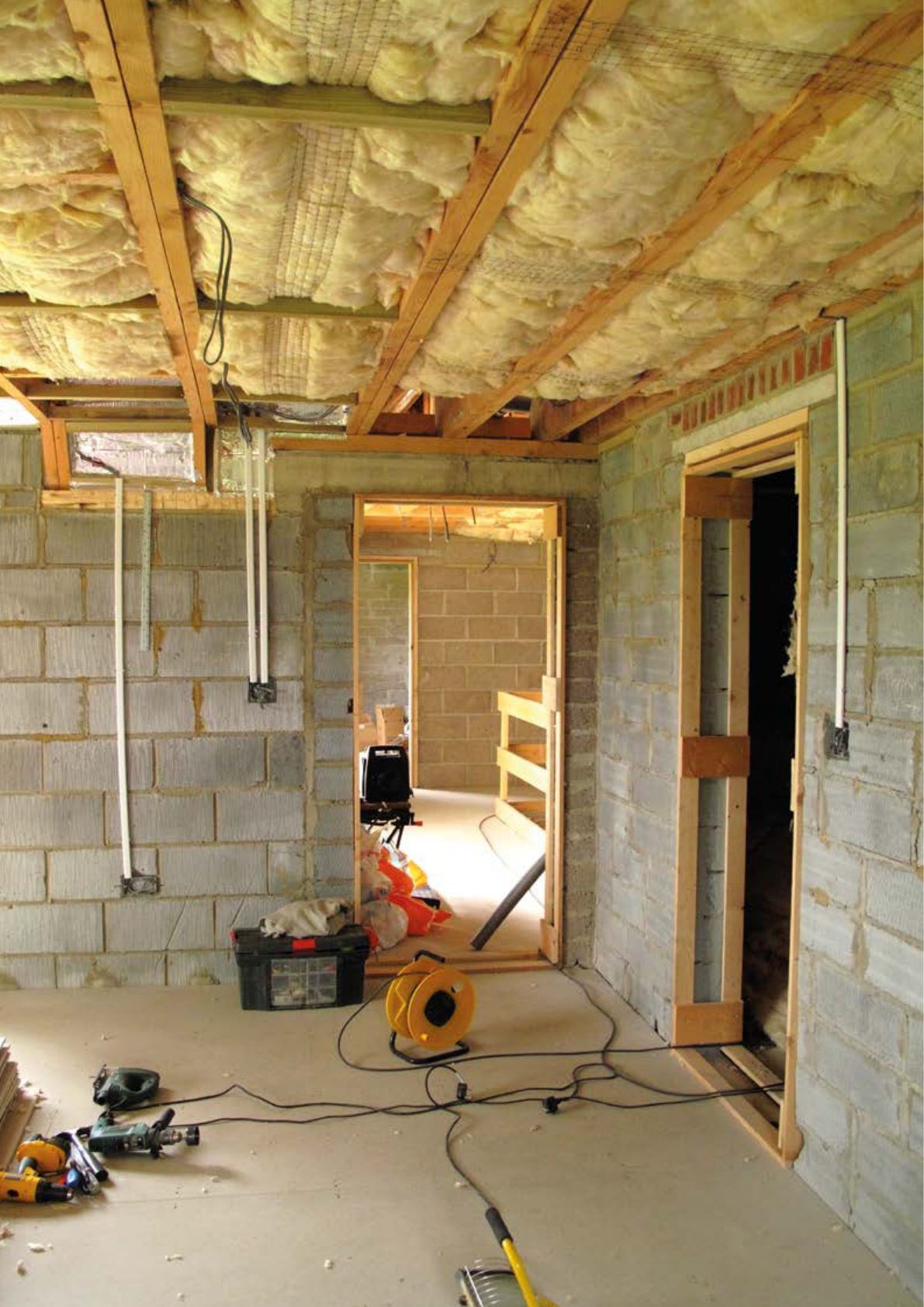
10 ACT ENERGY EFFICIENCY IMPROVEMENT SCHEME (EEIS)
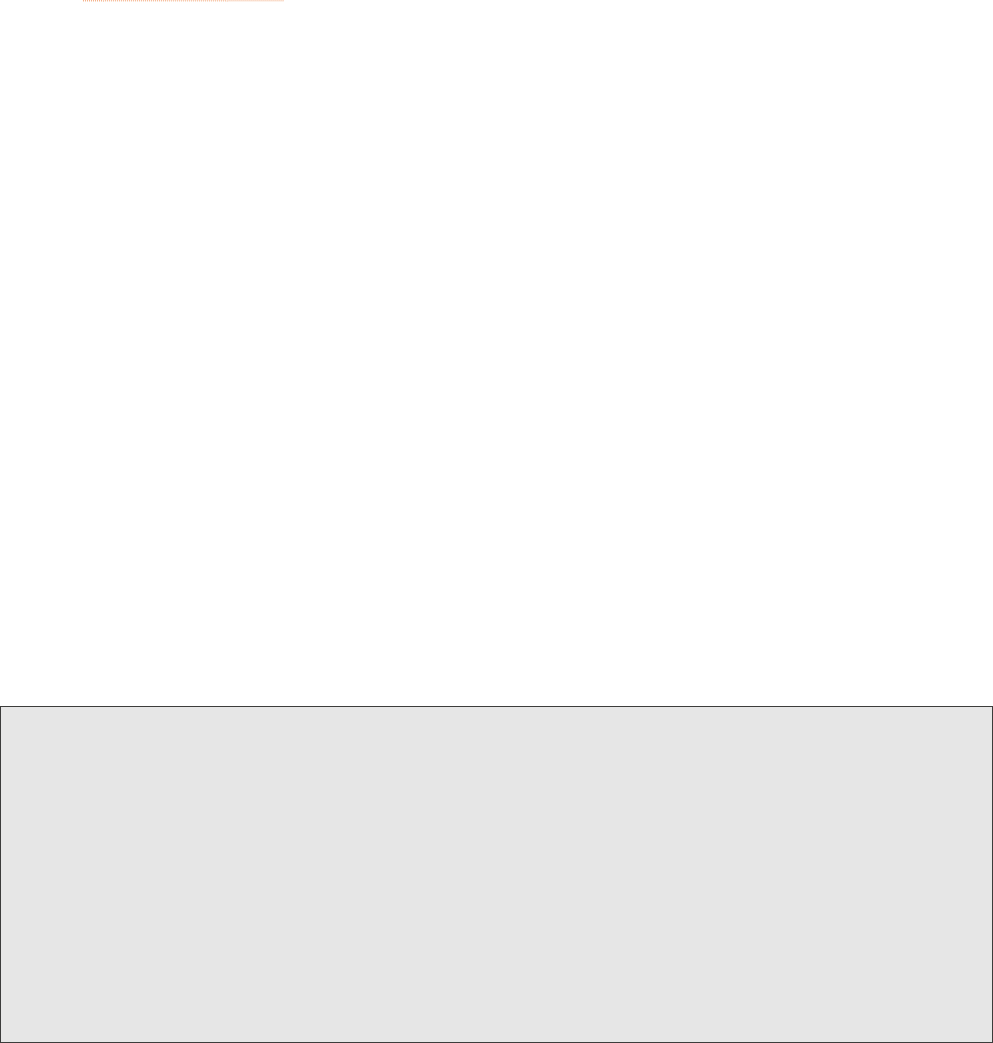
STAKEHOLDER CONSULTATION PAPER 11
4. ELIGIBLE ACTIVITIES
DETERMINATION
The rationale of the Eligible Activities Determination for Ceiling and Under-floor insulation was outlined in the previous
July 2017 EEIS Consultation Paper. Aer further consultation, it was decided that:
→ EEIS would develop one activity that allows ceiling insulation upgrades in homes with either no insulation or
insuicient insulation of R
m
≤ 2 whilst oering the same level of abatement for both scenarios. This approach
provides greater market certainty to retailers and eliminates the risk of people removing existing R
m
≤ 2 insulation to
receive a higher abatement and rebate.
→ EEIS would not set a mandatory co-payment for insulation upgrades because:
> the cost of delivering insulation activities will result in a co-payment requirement anyway.
> the majority of the market for this activity is the poorest and most vulnerable communities in Canberra, specifically
low income and rental households.
> there is already customer participation as:
> householders receiving insulation upgrades do need to be available at their premises for the pre-installation
inspection, insulation installation and post installation audit;
> landlords and tenants both will need to approve the insulation upgrade;
> the tenant or landlord will need to sign that they are happy with the services associated with this activity.
4.1 CEILING INSULATION (ACTIVITY 1.8)
The activity involves the installation of ceiling insulation into previously uninsulated or under insulated ceiling spaces
where the existing level of insulation is R
m
≤ 2.
4.1.1 ACTIVITY DEFINITION
Box 1: Activity Definition (Proposed Dra)
In accordance with the prescribed minimum activity performance specifications in section2 of this Part,
installing a ceiling insulation product in compliance with AS3999—2015 in a ceiling area above a room that is
either uninsulated or under insulated within a residential premises.
An “under insulated” ceiling space is defined as a ceiling space with less than optimal levels of pre-existing
ceiling insulation installed. For the purposes of this activity less than optimal insulation is deemed to be any
level of insulation with an average R
m
≤ 2.
Notes:
1 Attached garages, sheds or the like are ineligible.
2 R
m
≤ 2 is defined as ceiling insulation that constitutes <=100mm in thickness.

12 ACT ENERGY EFFICIENCY IMPROVEMENT SCHEME (EEIS)
4.1.2 MINIMUM ACTIVITY PERFORMANCE SPECIFICATIONS
Eligibility requirements do vary to some degree between the various jurisdictions that currently oer this type of
activity. The main areas of dierence relate to:
→ Spaces eligible for treatment: both the Retailer Energy Eiciency Scheme (REES) in South Australia and the NSW
Energy Savings Scheme (ESS) make it clear that the ceiling spaces that are eligible are only those with a roof space
immediately above (i.e. a ceiling space that separates a ground floor and a first floor are ineligible). The REES scheme
also limits the activity to “habitable” rooms only i.e. spaces such as bathrooms laundries and attached garages are
excluded. Generally this exclusion was not considered warranted, although exclusion of attached garages and sheds
was considered sensible.
→ The minimum areas to be treated: both the ESS and REES schemes set a minimum area that must be treated. In
the ESS scheme the minimum is 95% of the eligible floor area, in the REES scheme all eligible areas must be treated.
EEIS requires that a minimum of 95% of all safely accessible eligible areas must be treated. 100% is not chosen in
recognition of the need to cut holes in insulation around ceiling lighting for safety reasons.
→ National Construction Code (The Building Code of Australia) residential building classes eligibility: Class 1a(i)
residential premises are eligible for this activity. Due to additional administrative, safety and ownership complexities,
Class 1a(ii), Class 1b and Class 2 residential premises will not initially be eligible for this proposed new EEIS ceiling
insulation activity. EEIS will annually review this eligibility criteria.
Box 2: Minimum activity performance specifications (Proposed Dra)
To be an eligible activity the activity must—
a. be undertaken at an eligible residential premises, which is classed as Building Class 1a(i) as defined in the
National Construction Code (The Building Code of Australia).
Notes:
1 Class 1a(ii), Class 1b and Class 2 residential premises are not eligible for this activity due to additional administration, safety and ownership complexities.
2 If the residential premises contains a flueless gas appliance or a gas connection that could be used for a flueless gas appliance in the house then it is not
eligible for this activity.
b. be undertaken in uninsulated or under-insulated ceiling spaces located immediately below an exposed roof;
and
c. be applied to at least 95% of accessible eligible areas excluding garages and sheds; and
d. not be otherwise required by law, for example under the National Construction Code; and
e. be undertaken using a product or products meeting the installed product requirements in section 3; and
f. be completed and certified in accordance with the relevant code or codes of practice and other relevant
legislation applying to the activity, including any licensing, registration, statutory approval, activity
certification, health, safety, environmental or waste disposal requirements; and
g. be recorded in accordance with the relevant code of practice for the activity.
Notes:
3 All activities are subject to independent inspection or audit to confirm compliance with prescribed activity requirements.
4 This activity cannot be undertaken in a Mr Fluy house as listed on http://www.asbestostaskforce.act.gov.au/the-list/search-list.
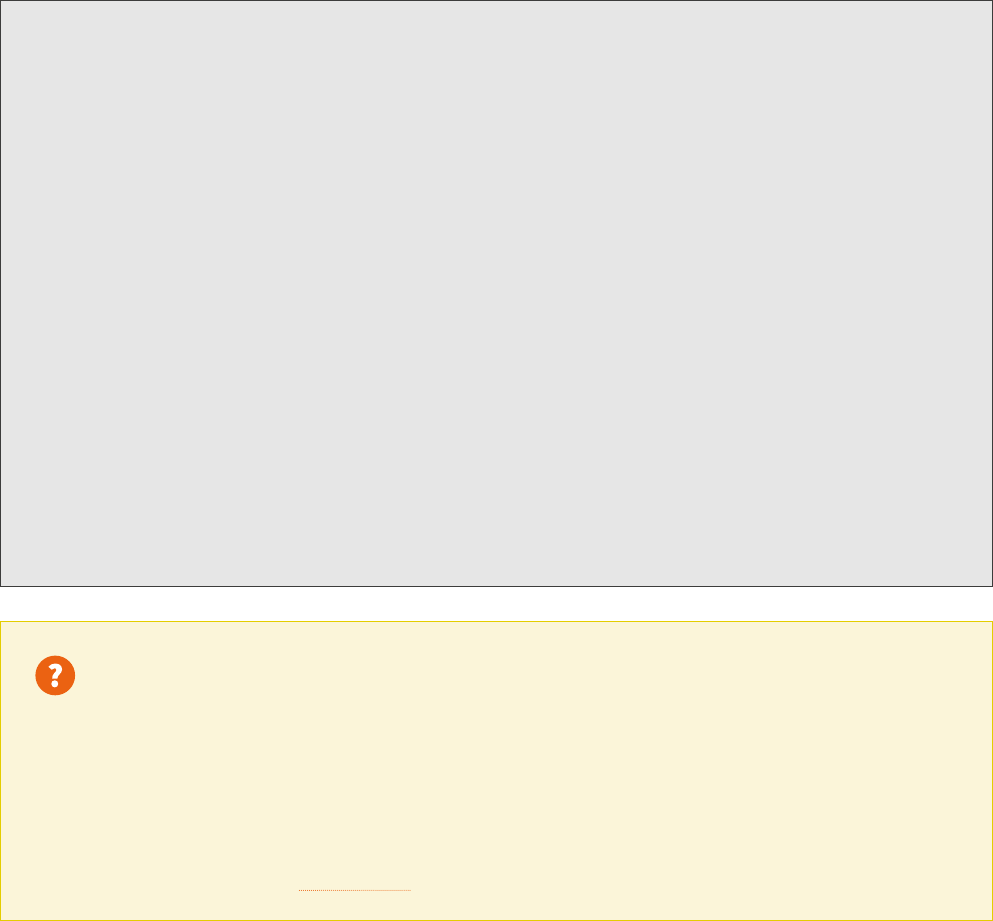
STAKEHOLDER CONSULTATION PAPER 13
4.1.3 INSTALLED PRODUCT REQUIREMENTS
Apart from the minimum performance standards applied, each of the other two jurisdictions oering this activity
includes similar installed product requirements as follows:
→ Minimum performance standards: for new housing in the ACT the level recommended for ceiling insulation by ACT
Government is R
m
5.0 except where there is insuicient roof space whereupon R
m
4.0 is allowed. It is assumed that
in most cases insuiciently under-insulated dwellings will require the old ineective insulation to be completely
removed and replaced with new insulation products to R
m
5.0 or, where there is insuicient roof space, R
m
4.0.
→ Types of insulation: all other schemes specify that foil type insulations are ineligible. This is largely in response
to safety issues identified during the HIP-RC program and is therefore also applied in the EEIS scheme. The REES
scheme also prohibits the use of blow-in cellulose type insulation due to increased risk, and this is also prohibited
here in the EEIS scheme.
→ Warranty: the ESS scheme requires a minimum warranty of 25 years as does the EEIS scheme here.
Box 3: Installed Product Requirements (Proposed Dra)
7 “Combustible – applied to a material – means combustible under AS 1530.1”, as per the definition in the NCC Building Code of Australia – Volume 2 Part 1.1.
An installed product must be an insulation product that—
a. complies with the relevant performance requirements of AS/NZS 4859.1; and
b. ensures the system achieves a minimum winter R
m
value of 5, when measured in accordance with the
eective version of AS/NZS 4859.1. In the case there is a physical barrier to achieving a winter R
m
value of 5, a
winter R
m
value of 4 may be used as a minimum for the system; and
Notes:
1 Electrician will confirm whether it is safe for the top up to occur on top of existing ceiling insulation. It is assumed for under-insulated ceilings that in the
majority of cases the old ineective ceiling insulation Rm≤ 2 will be removed and completely replaced with new ceiling insulation.
2 If the residential premises has ceilings with blow in cellulose insulation R
m
≤ 2, all blow in cellulose insulation needs to be removed before replacing with
new approved insulation products.
c. is not a foil or blow-in cellulose insulation type product; and
d. is fit for the purpose for which it is intended to be used; and
e. is made of a non-combustible
7
material in accordance with AS 1530.1 Methods for fire tests on building
materials, components and structures; and
f. comes with a minimum 25 year product warranty; and
g. complies with any product safety or other product performance requirements in a relevant code of practice
or other relevant legislation applying to the activity.
CONSULTATION QUESTIONS
Q1: Are the installed product requirements listed above appropriate to guarantee quality and safety of ceiling
insulation products?
Q2: Are there any additional performance requirements such as standards, product registers or certificates,
which should be referenced to ensure quality and safety of the installed ceiling insulation products?
Please add your answers to the online survey.

14 ACT ENERGY EFFICIENCY IMPROVEMENT SCHEME (EEIS)
4.1.4 CALCULATION OF ABATEMENT FACTOR
The estimate of energy savings that are expected to be realised from this activity are based on simulated (AccuRate)
thermal load reductions associated with an average household with and without the top up insulation activity applied.
It is assumed that on average the pre-existing condition oers an eective added insulation of R
m
0.5 and that aer
application of top up insulation the eective added insulation is R
m
5.0. Those thermal load reductions are then applied
to a space conditioning stock model for the ACT in order that end use energy savings by fuel type can be derived.
Finally, the estimated state average household input energy saving is discounted by approximately 40% to take account
of various limiting factors including:
→ Additionality and free riders
→ Rebound
→ Thermal bridging
The discounting factors applied along with the assumed longevity of the activity (25 years) have generally been aligned
with those used under the Victorian Energy Upgrades (VEU) scheme. The proposed formula for calculating abatement
from this activity is detailed in the box below.
Box 4: Calculation of abatement factor (Proposed Dra) – Combined Option
8 Insulation fundamentally acts to reduce the rate of heat flow from areas of higher temperature (e.g. the heated interior of a dwelling) to areas of lower temperature (e.g. the
exterior of a dwelling during a cold winter’s day). By limiting such heat flows, either out of a building in the winter or into the building in the summer, it is possible to reduce
the need for space conditioning (i.e. energy) as a means of maintaining acceptable internal comfort conditions for the dwellings occupants.
The total abatement factor in tonnes of carbon dioxide-equivalent (tCO2-e) of greenhouse gas emissions saved
for the activity is the sum of all abatement factors for each item in the activity definition in section 1 of this Part
undertaken in the same premises, determined by using the equations prescribed in this section.
The abatement factor is calculated as—
Abatement factor (tCO2 – e) = AAV * A
Where—
a. AAV is the relevant activity abatement value prescribed for the activity item in Table 1; and
b. A = is the number of square metres of ceiling space to which ceiling insulation has been applied (m
2
)
Table 1: Activity abatement values for Ceiling Insulation (New or Top up)
DESCRIPTION ACTIVITY ABATEMENT VALUE (tCO2-e )
For each m
2
of ceiling space that has been upgraded
to either R
m
5.0 or R
m
4.0
8
0.121

STAKEHOLDER CONSULTATION PAPER 15
4.2 UNDER-FLOOR INSULATION (ACTIVITY 1.9)
The activity involves the installation of insulation
9
to a previously uninsulated suspended timber ground floor. This
activity can take place at times of renovation works in circumstances where the ground floor boards are removed and
subsequently replaced. The more common application, however, is an installation from below the floor (in the subfloor
“crawl” space) where the insulation can be installed without the need to remove the flooring material.
4.2.1 ACTIVITY DEFINITION
Box 5: Activity Definition (Proposed Dra)
9 Insulation fundamentally acts to reduce the rate of heat flow from areas of higher temperature (e.g. the heated interior of a dwelling) to areas of lower temperature (e.g. the
exterior of a dwelling during a cold winter’s day). By limiting such heat flows, either out of a building in the winter or into the building in the summer, it is possible to reduce
the need for space conditioning (i.e. energy) as a means of maintaining acceptable internal comfort conditions for the dwellings occupants.
In accordance with the prescribed minimum activity performance specifications in section2 of this Part,
installing an underfloor insulation product in accordance with AS3999—2015 to the underside of a suspended
timber floor of a room within a residential premises that sits immediately above a subfloor space that is either:
a. Enclosed, that is, where the area of open ventilation in the subfloor walling to the under-floor space
averages less than 25,000 mm
2
per lineal metre of subfloor walling
b. Un-enclosed, that is, where the area of open ventilation in the subfloor walling to the under-floor space
averages 25,000 mm
2
or more per lineal metre of subfloor walling.
Notes:
1 Ground floors do not include concrete floors or floors that separate habitable rooms
2 Attached garages, sheds or the like are ineligible
4.2.2 MINIMUM ACTIVITY PERFORMANCE SPECIFICATIONS
Eligibility requirements do vary to some degree between the various jurisdictions that currently oer this type of
activity. The main area of dierence relates to the minimum areas to be treated. Both the ESS and VEET schemes set
a minimum area for each residential premises that must be treated to ensure suicient underfloor insulation to be
eective. In the ESS scheme, the minimum is 95% of the eligible floor area and in the VEET scheme the minimum
area is 20 m2. While these provisions may serve to ensure relatively large areas are treated in individual dwellings,
these restrictions may also serve to limit the applicability of the activity. Therefore, the EEIS proposes a compromise,
requiring that underfloor insulation “be applied to all safely accessible underfloor areas with a minimum of 20 m
2
.”
Whilst the REES scheme’s insulation activities allow them to be done in all residential building classes, due to
administrative, safety and ownership complexities, Class 1a(ii), 1b and Class 2 residential premises, as defined in the
National Construction Code (The Building Code of Australia), will initially not be eligible for this proposed new EEIS
underfloor insulation activity.

16 ACT ENERGY EFFICIENCY IMPROVEMENT SCHEME (EEIS)
To be an eligible activity the activity must—
a. be undertaken at an eligible residential premises, which is classed as Building Class 1a(i) as defined in the
National Construction Code (The Building Code of Australia); and
Notes:
1 Class 1a(ii), Class 1b and Class 2 residential premises as defined in the NCC (BCA) are not eligible for this activity.
2 If the residential premises contains a flueless gas appliance or a gas connection that could be used for a flueless gas appliance in the house then it is not
eligible for this activity.
b. be undertaken in uninsulated suspended timber floors located immediately above a subfloor space; and
c. be applied to all safely accessible underfloor areas with a minimum of 20 m
2
; and
d. not be otherwise required by law, for example under the National Construction Code; and
e. be undertaken using a product or products meeting the installed product requirements in Section 3; and
f. be completed and certified in accordance with the relevant code or codes of practice and other relevant
legislation applying to the activity, including any licensing, registration, statutory approval, activity
certification, health, safety, environmental or waste disposal requirements; and
g. be recorded in accordance with any relevant code of practice for the activity.
Notes:
3 All activities are subject to independent inspection or audit to confirm compliance with prescribed activity requirements.
4 Where only part of an uninsulated ground floor is to be insulated then living areas must be insulated as a priority, followed by bedrooms.
4.2.3 INSTALLED PRODUCT REQUIREMENTS
Apart from the minimum performance standards applied, each of the other three jurisdictions includes similar installed
product requirements as follows:
→ Minimum performance standards: minimum performance standards across the schemes are all currently set at
R
m
2.5. Notably, however, the VEET scheme is proposing to reduce this to R
m
1.5 on the grounds this activity has very
poor uptake (which is also the case in other jurisdictions) and the relatively high insulation standard of R
m
2.5 is seen
as a disincentive both on the grounds of cost and practicality. The larger R
m
2.5 batts can be diicult to fit into the
existing structure. EEIS will follow the VEET scheme and adopt the lower performance standard. The reduction in
credit between R
m
2.5 and R
m
1.5 is very small in absolute terms in any case.
→ Types of insulation: the ESS scheme specifies that foil type insulations are ineligible. This is largely in response to
safety issues identified during the HIP program and is therefore is also the approach in the EEIS scheme.
→ Product Warranty: the ESS scheme requires a minimum product warranty of 25 years, and this is proposed for
application in the EEIS scheme.
Box 6: Minimum activity performance specifications (Proposed Dra)
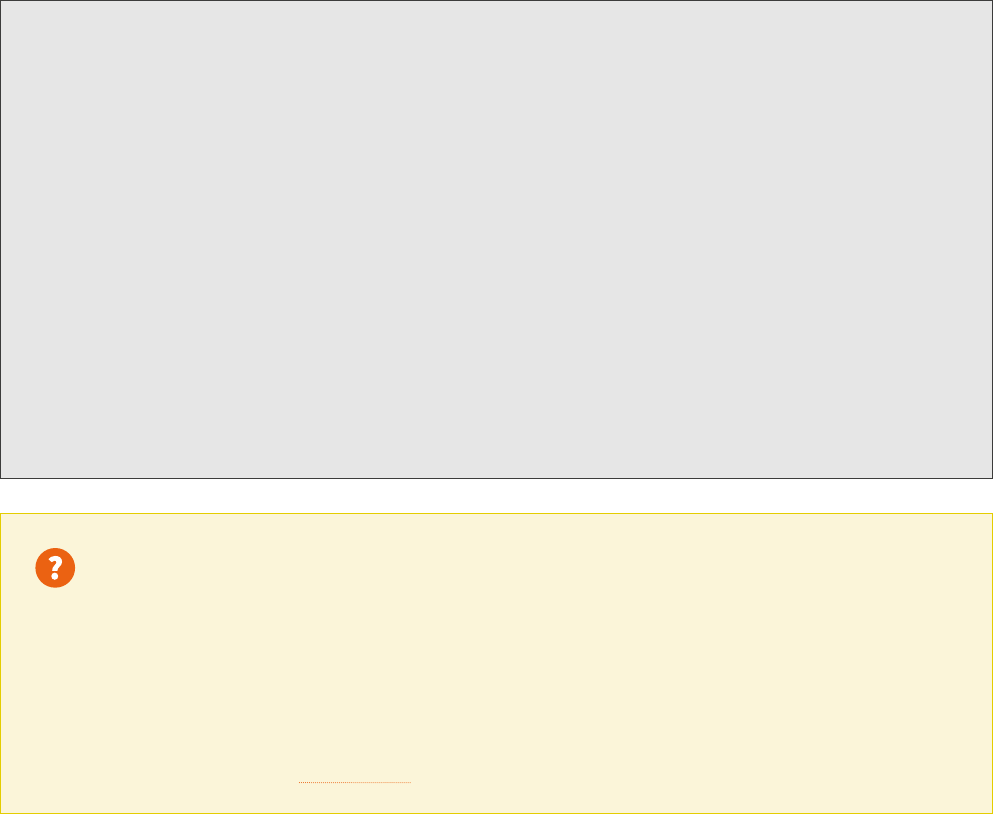
STAKEHOLDER CONSULTATION PAPER 17
An installed product must be a insulation product that—
a. complies with the relevant performance requirements of AS/NZS 4859.1; and
b. ensure the system achieves a minimum winter R
m
value of 1.5, when measured in accordance with the
eective version of AS/NZS 4859.1; and
c. is not a foil insulation type product; and
d. is made of hydrophobic materials (ie: fibres and cured binders) as well as having vapour permeance
10
of
equal to or greater than 0.1429 per newton second to allow any moisture to pass through ; and
e. is made of non-combustible
11
material in accordance with AS 1530.1 Methods for fire tests on building
materials, components and structures; and
f. is fit for the purpose for which it is intended to be used; and
g. comes with a minimum 25 year product warranty; and
h. complies with any product safety or other product performance requirements in a relevant code of practice
or other relevant legislation applying to the activity.
CONSULTATION QUESTIONS
Q3: Are the installed product requirements listed above appropriate to guarantee quality and safety of under-
floor insulation products?
Q4: Are there any additional performance requirements such as standards, product registers or certificates,
which should be referenced to ensure quality and safety of the installed under-floor insulation products?
Please add your answers to the online survey.
10 Vapour permeance is defined as the quantity of vapour flow across a unit area that will flow through a unit thickness under a unit vapour pressure dierence.
11 “Combustible – applied to a material – means combustible under AS 1530.1”, as per the definition in the NCC Building Code of Australia – Volume 2 Part 1.1.
Box 7: Installed Product Requirements (Proposed Dra)
4.2.4 CALCULATION OF ABATEMENT FACTOR
The estimate of energy savings that are expected to be realised from this activity are based on simulated (AccuRate)
thermal load reductions associated with an average household with and without the insulation activity applied. Those
thermal load reductions are then applied to a space conditioning stock model for the ACT) in order that end use energy
savings by fuel type can be derived. Finally the estimated state average household input energy saving is discounted by
approximately 40% to take account of various limiting factors including:
→ Additionality and free riders
→ Rebound
→ Thermal bridging
The discounting factors applied along with the assumed longevity of the activity (25 years) have generally been aligned
with those used under the VEU scheme.
The proposed formula for calculating abatement from this activity is in Box 8.

18 ACT ENERGY EFFICIENCY IMPROVEMENT SCHEME (EEIS)
Box 8: Calculation of abatement factor (Proposed Dra) – Deemed Savings Formula
1. The total abatement factor in tonnes of carbon dioxide-equivalent (tCO2-e) of greenhouse gas emissions
saved for the activity is the sum of all abatement factors for each item in the activity definition in section 1 of
this Part undertaken in the same premises, determined by using the equations prescribed in this section.
2. The abatement factor is calculated as—
Abatement Factor (t CO2-e) = AAV × A
Where—
a. AAV is the relevant activity abatement value prescribed for the activity item in Table 2; and
b. A is the number of square metres of underfloor space to which insulation has been applied (m
2
).
Table 2: Activity abatement values for under-floor insulation
DESCRIPTION ACTIVITY ABATEMENT VALUE
(tCO2-e)
Item 1 (a) For each m
2
of enclosed underfloor space that R
m
1.5
insulation has been applied.
0.044
Item 2 (a) For each m
2
of enclosed underfloor space that R
m
2.5
insulation has been applied.
0.051
Item 1 (b) For each m
2
of unenclosed underfloor space that R
m
1.5
insulation has been applied.
0.103
Item 2 (b) For each m
2
of unenclosed underfloor space that R2.5
insulation has been applied.
0.116

STAKEHOLDER CONSULTATION PAPER 19

20 ACT ENERGY EFFICIENCY IMPROVEMENT SCHEME (EEIS)

STAKEHOLDER CONSULTATION PAPER 21
5. RISK ANALYSIS
The proposed EEIS codes of practice for Ceiling insulation
(Activity 1.8) and Under-floor insulation (Activity 1.9) were
informed by:
→ An EEIS Residential Insulation Risk Management Report
of what risks might be associated with the inclusion of
insulation activities into the EEIS;
→ Stakeholder feedback on the EEIS Residential
Insulation Risk Management Report;
→ The codes of practice and requirements of incentivised
insulation activities in energy eiciency obligation
schemes in other States and Territories.
These sources provided the basis for the development of
this Consultation Paper.
The findings of the Report of the Royal Commission
into the Home Insulation Program, and reviews
carried out by most jurisdictions have concluded that
incentivised insulation programs must include rigorous
and robust processes and procedures to ensure the
safety of householders, insulation installers and the
general public. A review was undertaken by Common
Capital, for the Environment, Planning and Sustainable
Development Directorate (EPSDD), to assess what risks
might be associated with the inclusion of new proposed
ceiling and under-floor insulation activities into the EEIS.
The EEIS Residential Insulation Risk Management Report
had the objectives to:
→ Synthesise the findings and recommendations of
a number of major insulation risk reviews in other
Australian jurisdictions (including the Home Insulation
Program) in the context of the EEIS;
→ Consider any additional EEIS specific risks;
→ Recommend treatment options to inform the
development of the Eligible Activities Code of Practice
and the Record Keeping and Reporting Code of
Practice that will regulate safe insulation installation
practice.
The main risks identified included
12
:
→ RISK 1 - Installer workplace health and safety
→ RISK 2 - Installer electrocution
→ RISK 3 - House fire and other property damage
→ RISK 4 - Non-compliant installation and improper
installer practice
→ RISK 5 - Poor risk identification and unclear
governance
→ RISK 6 - Lack of industry capacity or involvement and
→ RISK 7 - Lack of consumer participation.
5.1 PROPOSED RISK
TREATMENT STRATEGIES
The review proposed seven risk treatment
recommendations to support the inclusion of new
insulation eligible activities for the EEIS to ensure that
the EEIS responds to all of the recommendations of
the Report of the Royal Commission into the Home
Insulation Program. Each recommended risk treatment
included detailed risk management strategies for
consideration and validation by industry and other
stakeholders. These risk treatments have informed the
development of EEIS Codes of Practice for both ceiling
and under-floor insulation activities which are discussed
below. A sample of the risk treatments recommended in
the EEIS Residential Insulation Risk Management Report
includes:
5.1.1 RISK 1 - INSTALLER WORKPLACE
HEALTH AND SAFETY
Installer health and safety will be addressed by
ensuring that a suitable minimum level of training and
qualification be required for all insulation installers
operating under the EEIS – ie: the full Clean Energy
Council’s insulation installer accreditation requirements.
All licensed electricians, insulation installers and auditors
participating in this EEIS activity must also have “current”
asbestos awareness, working at heights and working in
confined space training. EEIS requires evidence that all
12 pp. 25-27 – EEIS Residential Insulation Risk Management Report, February 2018

22 ACT ENERGY EFFICIENCY IMPROVEMENT SCHEME (EEIS)
training requirements are met before installers are approved to operate in the EEIS. If asbestos is suspected of being
present, the box below outlines the required risk treatment steps which must be included in the retailer’s activity Safe
Work Method Statements and applied in practice.
Box 9: Risk Treatments - If asbestos is identified
If an EEIS residential insulation activity approved installer identifies asbestos, they need to:
→ Step 1: Stop work
→ Step 2: Notify immediate supervisor
→ Sept 3: Notify the principle contractor
→ Step 4: The principle contractor should notify the retailer.
→ Step 5: The principle contractor should inform the owner and tenant of the residential premises. Unless the
following actions are undertaken, then this residential premise is no longer eligible for any EEIS activities.
Once it is identified that asbestos may be present the following steps should be completed to ensure that it
is safe for work to continue*.
→ Step 6: A licensed asbestos assessor is engaged by the home owner to verify whether asbestos is, or is not
present. (See list of accredited licensed asbestos assessors at https://www.accesscanberra.act.gov.au/app/
services/licence/#/
→ Step 7: If verified, by a licensed asbestos assessor, that there is no asbestos, inform the principle contractor.
The principle contractor can now deliver these insulation activities and other EEIS activities at this
residential premises.
→ Step 8: If verified that there is asbestos by the licensed asbestos assessor they need to notify the home
owner and engage the services of a licensed asbestos removalist who requests a five-day notification waiver
to remove the asbestos.
→ Step 9: The site must be made safe via appropriate removal of the asbestos by a licensed asbestos
removalist and clearance certificate issued by a licensed asbestos assessor. (See list of accredited licensed
asbestos assessors and removalist at https://www.accesscanberra.act.gov.au/app/services/licence/#/
→ Step 10: Have asbestos removed by a licensed asbestos removalist once approval by Access Canberra is
given - 5 day notification or waiver, whichever applicable.
* The home owner is responsible for all costs of inspections and/or removal of asbestos
→ Step 11: If, despite professional work to remove asbestos, it is deemed that the site could still be unsafe,
because, for instance, of ongoing risks posed by loose fill asbestos insulation, then no EEIS insulation
activity can be undertaken at the site. Access Canberra Worksafe and the ACT Government’s Asbestos
Taskforce (http://www.asbestostaskforce.act.gov.au/home) needs to be notified (by both the home owner
and licensed asbestos assessor) to determine if the residence may need to be added to the ACT Asbestos
Taskforce list and whether further assessment and appropriate remediation measures undertaken. This
residential dwelling continues to not be eligible for any EEIS activities.
→ Step 12: If a clearance certificate is issued by the asbestos assessor and Access Canberra, then WorkSafe ACT
needs to be provided with the clearance certificate.
→ Step 13: Then the home owner can then re-contact the ACT electricity retailer and principle contractor and
invite them to proceed with the insulation installation under this EEIS activity. The home owner needs to
share appropriate evidence with the principle contractor. This evidence needs to be documented by the
retailer evidencing that all asbestos was removed and provide a copy of the clearance certificate before any
further work was undertaken.
STAKEHOLDER CONSULTATION PAPER 23
5.1.2 RISK 2 - INSTALLER ELECTROCUTION
The risk of installer electrocution will be addressed by requiring that a licensed electrician undertake a pre-insulation
installation electrical safety check implementing the electrical safety component of Safe Work Method Statements for
installing insulation in residential premises. That only residential premises approved as being electrically safe by both
the licensed electrician, the approved provider and retailer are allowed to then have an insulation upgrade installation
under the EEIS. That licensed electricians must install RCDs where currently not present. Insulation installers must also
have “current” training in electrical safety as part of gaining Clean Energy Council’s insulation installer accreditation
which is to be mandatory under the EEIS. Licensed electricians, insulation installers and auditors must be competent in
and trained in how to isolate power at the mains, test for de-energisation, implement lock out and tag and, once their
work is finished, restore power supply.
5.1.3 RISK 3 - HOUSE FIRE AND OTHER PROPERTY DAMAGE
Fire risks will be reduced by a requirement during the pre-installation electrical safety check for the licensed electrician
to replace any existing halogen lighting with light emitting diode (LED) lighting. That current insulation standards be
referenced and implemented as mandatory compliance requirements in legislative and supporting documents. The
insulating material needs to be non-combustible in accord with requirements in AS 1530.1 Methods for fire tests on
building materials, components and structures. Ensure underfloor insulation is hydrophobic and is installed in a way
that complies with termite protection, sub-floor clearances, and ventilation requirements.
5.1.4 RISK 4 - NON-COMPLIANT INSTALLATION AND
IMPROPER INSTALLER PRACTICE
The risk of non-compliance installation and improper installer practice is addressed with a range of risk treatments a
sample of which includes:
→ All insulation installers must meet the requirements of and have Clean Energy Council insulation installer
accreditation.
→ That reflective foil laminate will not be an eligible activity under the EEIS.
→ That insulation installers’ first 3-5 jobs have to be audited, with subsequent work randomly also audited, by an
independent auditor.
→ If the independent auditor determines consistently that safety procedures have not been fully followed or the
insulation installation does not comply with relevant standards then:
> The appropriate installers will be prohibited from undertaking further jobs whilst the approved provider is required
to fix the problems.
> No new work will be allowed until the issues in existing aected jobs are fixed.
> Retraining of relevant installers will be required to address the problematic issues.
> If systematic safety or other non-compliance issues with the EEIS ceiling and/or underfloor insulation activity
codes of practice, which are determined to be material, continue aer this clear warning then the EEIS has the
right to remove non-compliant individual installers from the scheme.
24 ACT ENERGY EFFICIENCY IMPROVEMENT SCHEME (EEIS)
5.1.5 RISK 5 - POOR RISK IDENTIFICATION AND UNCLEAR GOVERNANCE
AND RISK 6 - LACK OF INDUSTRY CAPACITY OR INVOLVEMENT
As outlined above, to address identification and governance risks EEIS first commissioned a detailed residential
insulation risk and risk treatment report by independent experts. Based on these findings the EEIS commissioned
expert consultants to develop dra EEIS residential insulation activity codes of practice summarised below in this
Consultation Paper. Access Canberra has been extensively consulted through this process to ensure the design of
these new EEIS residential insulation activities can be safely delivered. This package has then undergone targeted
consultation of government and insulation industry risk experts at an ACT EEIS workshop in July 2018, and nationally
through the July and October 2018 meetings of the Interjurisdictional Steering Committee on Residential Insulation
Programs. This interjurisdictional working group includes representatives from the NSW, ACT, Victoria and South
Australian Governments, the insulation industry, and Clean Energy Council.
5.1.6 RISK 7 - LACK OF CONSUMER PARTICIPATION
Lack of consumer participation is addressed by:
→ The owner and tenant needing to agree for this insulation activity to occur.
→ The activity likely to require in practice a co-payment to cover the total costs of insulation installation.
→ The home owner or tenant needing to formally sign that they are happy with the services provided.
5.2 STAKEHOLDER FEEDBACK ON THE META RISK REVIEW
The findings of the meta risk review were presented in the EEIS Residential Insulation Risk Management Report at
the EEIS Review Stakeholder Forum in February 2018, the EEIS Insulation Industry Stakeholder Workshop in July
2018, as well as meetings of the Interjurisdictional Steering Committee on Insulation throughout 2018. Stakeholders
recommendations were incorporated into this Consultation Paper, the EEIS Residential Insulation Risk Management
Report and reflected in the development of the Eligible Activities and Record Keeping and Reporting Codes of Practice.

STAKEHOLDER CONSULTATION PAPER 25
6. PROPOSED ELIGIBLE
ACTIVITIES CODES OF
PRACTICE (CEILING AND
UNDER-FLOOR INSULATION)
6.1 COMPETENCY REQUIREMENTS
Competency requirements, in the dra EEIS Eligible Activities Code of Practice for ceiling and under-floor insulation
activities outlined below, are proposed to include:
→ mandatory training and qualifications; and
→ for insulation installers, accreditation with the Clean Energy Council Insulation Installer Accreditation provider.
Mandatory training and qualification standards are considered as essential measures to include in the legislation
to ensure installer and householder safety, protection of property, and to ensure eective and compliant insulation
installation. Recommendations from the previous EEIS Residential Insulation Risk Management Report
13
and stakeholder
feedback to this document included that:
→ a mandatory minimum level of licensed electrician, insulation installer and independent auditor competency should
be required under the EEIS, that builds upon current ACT requirements, for all electricians, insulation installers and
auditors involved with ensuring safety, and delivering and auditing the new EEIS insulation Activities;
→ the competency standards developed by the Clean Energy Council (CEC)
14
in association with Insulation Council
of Australia and New Zealand (ICANZ) for the CEC Insulation Installer Accreditation framework be adopted for
insulation installers.
13 p. 37 - “Risk Management Report, Assessment of risk and management options for proposed EEIS insulation Activities, Consultation Report, February 2018”
14 Background and information on the CEC Insulation Accreditation Program and Accreditation Process

26 ACT ENERGY EFFICIENCY IMPROVEMENT SCHEME (EEIS)
Proposed training and qualification requirements in the dra EEIS Eligible Activity Codes of Practice are in line with
these recommendations. They also align with the requirements of other jurisdictions including the NSW ESS, the
REES and the requirements currently being proposed for the VEU
15
. The following competency requirements are
recommended for inclusion in the EEIS Eligible Activities Code of Practice for both ceiling and under-floor insulation
activities.
Box 10: Licensed Electrician and Insulation Installer - Training and Competency Requirements
1. The pre-installation electrical safety check needs to be carried out by a licensed electrician who has a
current ACT electrical licence.
2. Installing (ceiling / under-floor) insulation products shall be carried out by an authorised installer who has
completed all required training prescribed in Part 4 of this code.
3. The licensed electrician and authorised insulation installer must hold a General Construction Induction Card.
4. The licensed electrician and authorised insulation installer must have the required workplace health and
safety training and qualifications including but not limited to having—
a. Completed 10675NAT “Course in Asbestos Awareness” or equivalent course or an equivalent unit of
competency, either completed within the last 3 years or have obtained a Certificate of Attendance for an
“Asbestos awareness” refresher course within the last 3 years; and
b. completed RIIWHS204D “Work safely at heights” or an equivalent unit of competency, either completed
within the last 3 years or have obtained a Certificate of Attendance for an “Work safely at heights”
refresher course within the last 3 years; and
c. completed RIIWHS202D “Enter and work in confined spaces” or an equivalent unit of competency, either
completed within the last 3 years or have obtained a Certificate of Attendance for an “Enter and work in
confined spaces” refresher course within the last 3 years; and
5. The licensed electrician and insulation installer must be competent in:
a. identifying whether there is a standard flueless gas appliance or a gas connection that could be used for
a flueless gas appliance in the room. If either are present, then the residential premises is not eligible for
this activity.
b. understanding and communicating to consumers the needs for adequate ventilation to avoid
condensation in buildings.
Note: Relevant handbooks on condensation include the Handbook: Condensation in Buildings by the Australian Building Codes Board; Tasmanian
Government’s Condensation In Buildings: Tasmanian Designers’ Guide.
6. The authorised insulation installer shall have undertaken the Clean Energy Council Insulation Installer
Accreditation course within the last three years. The insulation installer must hold current accreditation with
the Clean Energy Council Insulation Installer Accreditation system.
Note: Details about the CEC Insulation Accreditation Program and Accreditation Process.
7. The licensed electrician and insulation installer must be trained, competent and experienced in how to
isolate power at the mains, test for de-energisation, implement lock out and tag and, once their work has
finished, restore power supply to fulfil the requirements of AS/NZ 3000: Electrical Installations. This needs to
include the licensed electrician and insulation installer being trained, competent and experienced in testing
for de-energisation of relevant circuits by checking if lights are operational and checking if cables and power
points are active with a voltage detector.
15 p. 31-32 - “Risk Management Report, Assessment of risk and management options for proposed EEIS insulation Activities, Consultation Report, February 2018”
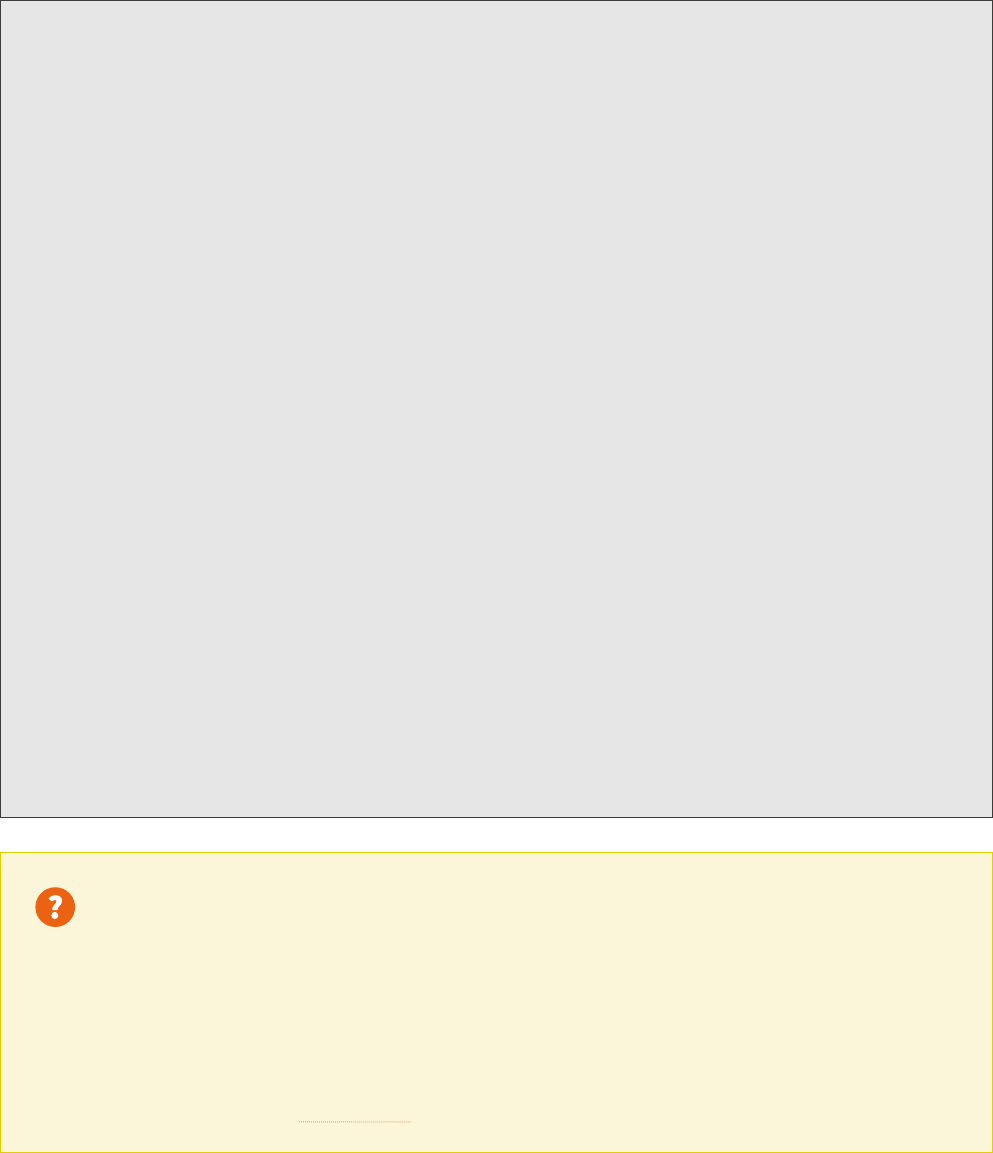
STAKEHOLDER CONSULTATION PAPER 27
8. Finally, in addition to the above, the licensed electrician must also be competent in ensuring the following:
a. that there is no unsafe wiring and that the wiring is rated correctly; and
b. that the installation of insulation will not lead to any electrical wiring or circuits being materially
adversely aected; and
c. if electrical safety risks are found to be present, they must be competent to undertake remediation
works to comply with the ACT Electrical Safety Act, all relevant standards such as AS/NZS 3000, prior to
the installation of insulation; and
d. if the residential premises has halogen downlights or incandescent lighting installed in the ceiling
areas to be insulated, they must be competent to ensure these halogen downlights are replaced by
light emitting diode (LED) downlights, in accordance with EEIS Activity 4.1, prior to the installation of
insulation; and
Note: If iron core transformers are present, the licensed electrician must li the transformer above the ceiling by clipping it securely to a truss member; and
e. if the premises does not have a Residual Current Device (RCD) installed in the relevant circuit, they must
be competent to install an RCD for that relevant circuit prior to the installation of insulation; and
f. if there is existing ceiling insulation R
m
≤ 2, the licensed electrician, as part of their electrical safety check,
needs to be competent to advise on:
i. whether or not existing insulation should be removed; and/or
ii. whether “top up” insulation should be put on top of existing insulation; and
iii. whether it is electrically safe for the insulation installer to implement (i) or (ii); and
g. be able to provide suitable evidence, as determined by the EEIS administrator, that all electrical safety
requirements have been achieved prior to the installation of insulation.
To ensure competencies by the licensed electrician in (8) (a)-(g) the retailer needs to submit the ACT electrical
licence of the licensed electrician as well as evidence of targeted training of the licensed electrician by the
retailer in (8)(f).
CONSULTATION QUESTIONS
Q5: To ensure insulation installers and licensed electricians hold appropriate training and qualifications, does
the above list of competency requirements need the addition or removal of any items?
Q6: Should Clean Energy Council Insulation Installer Accreditation be mandatory for authorised insulation
installers?
Please add your answers to the online survey.

28 ACT ENERGY EFFICIENCY IMPROVEMENT SCHEME (EEIS)
THE ROLE OF THE INDEPENDENT AUDITOR
Independent insulation auditors have a critical role to check the first 3 jobs of any new insulation installer in
the EEIS scheme as well as to undertake random checks of insulation installations to ensure compliance and
safety. If the independent auditor determines consistently that safety procedures have not been fully followed
or the insulation installation does not comply with relevant standards then the non-compliant installers will be
prohibited from undertaking further new jobs whilst the approved provider fixes the problems. No new work
will be allowed until the issues in existing aected jobs are fixed. Retraining of relevant approved installers
will be required to address the problematic issues. If systematic safety or other non-compliance issues with
the EEIS ceiling and/or underfloor insulation activity codes of practice, which are determined to be material,
continue aer this clear warning then the EEIS has the right to remove non-compliant individual installers from
the scheme.
TRAINING AND COMPETENCY REQUIREMENTS
Currently there is no “Accredited Insulation Installation Government Program Auditor Training Programs”
available in Australia. So, the following four elements are proposed as requirements to ensure insulation
installation auditors have the required knowledge, training and competencies to be eective independent
program auditors approved under the EEIS:
1. Undertake relevant parts of the Clean Energy Council’s Insulation Accreditation Training Course, noting that
they do not need to meet the practical insulation installation requirements of the course. Specifically, the
auditor shall be required to have completed a minimum of the following training within the last 2-3 years:
> CPCCOHS2001A Apply OHS requirements policies and procedures in the construction industry
> CPCCCM1015A Carry out Measurements and Calculations
> CPCCCM2010B Work Safely at Heights
> CPCCPB3014A Install Batt Insulation Products
> CPCCPB3027A Install Ceiling Insulation
2. Complete 10675NAT “Course in Asbestos Awareness” or equivalent course or an equivalent preceding unit
of competency, either completed within the last 3 years or have obtained a Certificate of Attendance for an
“Asbestos awareness” refresher course within the last 3 years; and
Complete RIIWHS202D “Enter and work in confined spaces” or an equivalent preceding unit of competency,
either completed within the last 3 years or have obtained a Certificate of Attendance for an “Enter and work
in confined spaces” refresher course within the last 3 years; and
3. Undertake targeted insulation auditor training using training materials reviewed and approved as being
suitable by the EEIS Administrator. This targeted training needs to ensure that the independent auditor
is trained, competent and experienced in how to isolate power at the mains, test for de-energisation,
implement lock out and tag and restore power supply to fulfil the requirements of “AS/NZ 3000:2018:
Electrical Installations. This needs to include being trained and competent in testing for de-energisation of
relevant circuits by checking if lights are operational and checking if cables and power points are active with
a voltage detector.
Box 11: Independent Insulation Auditor - The Role, Training and Competency Requirements
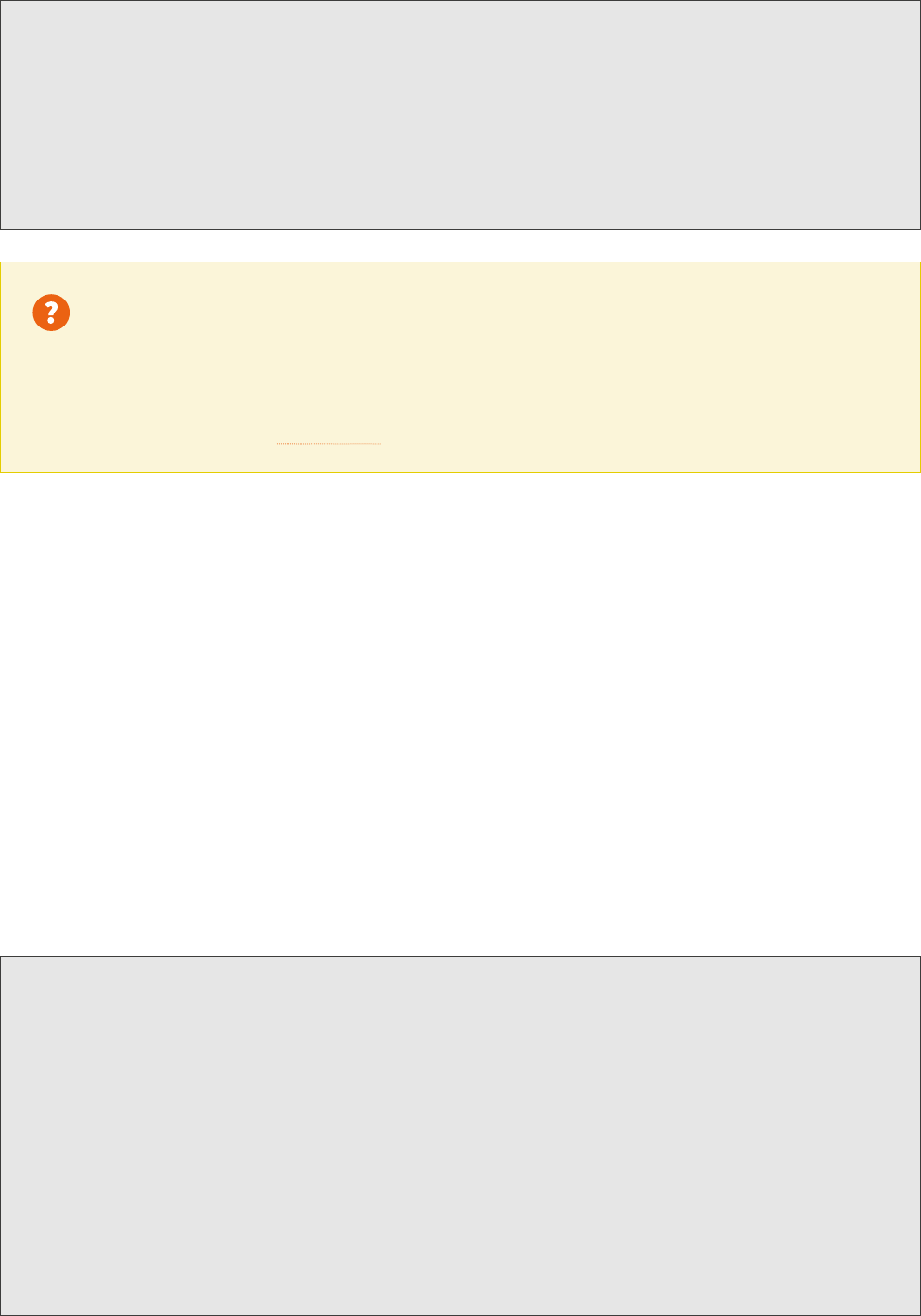
STAKEHOLDER CONSULTATION PAPER 29
6.2 MINIMUM PERFORMANCE SPECIFICATIONS
Minimum Performance Specifications in the EEIS Eligible Activities Code of Practice for ceiling (Activity 1.8) and under-
floor insulation activities (Activity 1.9), as detailed below, are proposed to include:
→ referencing current insulation standards;
→ additional requirements specific to insulation installation practice;
→ a pre-installation electrical safety check carried out by a Licensed Electrician; and
→ risk assessment and all other non-electrical safety requirements consistent with the Electricity Retailer’s submitted
SWMS to be carried out by the CEC insulation accredited insulation installer; and
→ retailers are required by the EEIS ACT to undertake auditing and compliance. This needs to be undertaken by a
qualified independent insulation auditor (See requirements in Box 11) and
→ the independent insulation auditor will undertake audits of the first three jobs of any new insulation installer as soon
as those jobs are done, and then undertake random audits on a percentage of jobs aer that.
Box 12: Minimum Performance Specifications
CONSULTATION QUESTION
Q7: To ensure safe insulation installation practices, does the above list of training, experience and competency
requirements for independent auditors need the addition or removal of any items?
Please add your answers to the online survey.
4. Evidence of at least 1-2 years’ experience either being:
> A residential insulation auditor for either insulation companies or other insulation government programs.
> An accredited insulation installer with a good safety record.
> A building surveyor with experience auditing residential insulation upgrades or new build installation
> A licensed electrician with experience undertaking electrical safety checks for insulation programs or
insulation installations.
1. Prior to the installation of ceiling insulation, an electrical safety check must be carried out by a licensed
electrician. This must include, but is not limited to, the licensed electrician ensuring the following;
a. ensuring there are no standard flueless gas appliances or a gas connection that could be used for a
flueless gas appliance in the room. If either are present, then the residential premises is not eligible for this
activity.
b. that there is no unsafe wiring and that the wiring is rated correctly; and
c. that the installation of insulation will not lead to any electrical wiring or circuits being materially adversely
aected.
d. if electrical safety risks are found to be present, remediation works were performed to comply with the
ACT Electrical Safety Act, all relevant standards such as AS/NZS 3000, and relevant sub-sections of the
compliance plan SWMS prior to the installation of insulation; and

30 ACT ENERGY EFFICIENCY IMPROVEMENT SCHEME (EEIS)
e. if the residential premises has halogen downlights or incandescent lighting installed in the ceiling areas
to be insulated, these halogen downlights are replaced by light emitting diode (LED) downlights, in
accordance with EEIS Activity 4.1, prior to the installation of insulation; and
Note: If iron core transformers are present, the licensed electrician must li the transformer above the ceiling by clipping it securely to a truss member; and
f. if the premises does not have a Residual Current Device (RCD) installed in the relevant circuit, it is a
requirement that a RCD must be installed for that relevant circuit prior to the installation of insulation; and
g. If there is existing old insulation Rm ≤ 2, advise on whether or not it should be removed or whether “top
up” insulation should be put on existing insulation and if it is electrically safe to do so; and
h. suitable evidence, as determined by the administrator, must be obtained stating that all electrical safety
requirements have been achieved prior to the installation of insulation.
CONSULTATION QUESTIONS
Q8: To reduce the risk of installer electrocution and potential house fire as a result of the insulation installation
is it appropriate to require:
→ A pre installation risk assessment to be carried out by a licensed electrician?
→ A LED upgrade (ie: EEIS Activity 4.1), if the premises has halogen downlights or incandescent lighting
installed in its ceiling space prior to installation of ceiling insulation?
→ A residual current device (RCD) installed, if the premises to be insulated (ceiling and/or under-floor) does
not have one for aected circuits?
Please add your answers to the online survey.
17 p. 39 - “Risk Management Report, Assessment of risk and management options for proposed EEIS insulation Activities, Consultation Report, February 2018”
18 pp. 31-32 and 34 - “Risk Management Report, Assessment of risk and management options for proposed EEIS insulation Activities, Consultation Report, February 2018”
6.2.1 REFERENCING CURRENT INSULATION STANDARDS
Referencing current insulation standards, as mandatory compliance requirements in the legislation, was identified
in the EEIS Residential Insulation Risk Management Report as essential to ensure installer and householder safety,
protection of property, and to ensure eective and compliant insulation installation
17
.The standards referenced in
dra EEIS Eligible Activities Code of Practice (Activity 1.8 and 1.9) listed below are in line with these recommendations.
They also align with the requirements of other Jurisdictions including the NSW ESS, the REES and the requirements
currently being proposed for the VEU
18
. Referencing the following insulation standards and their requirements are
recommended.
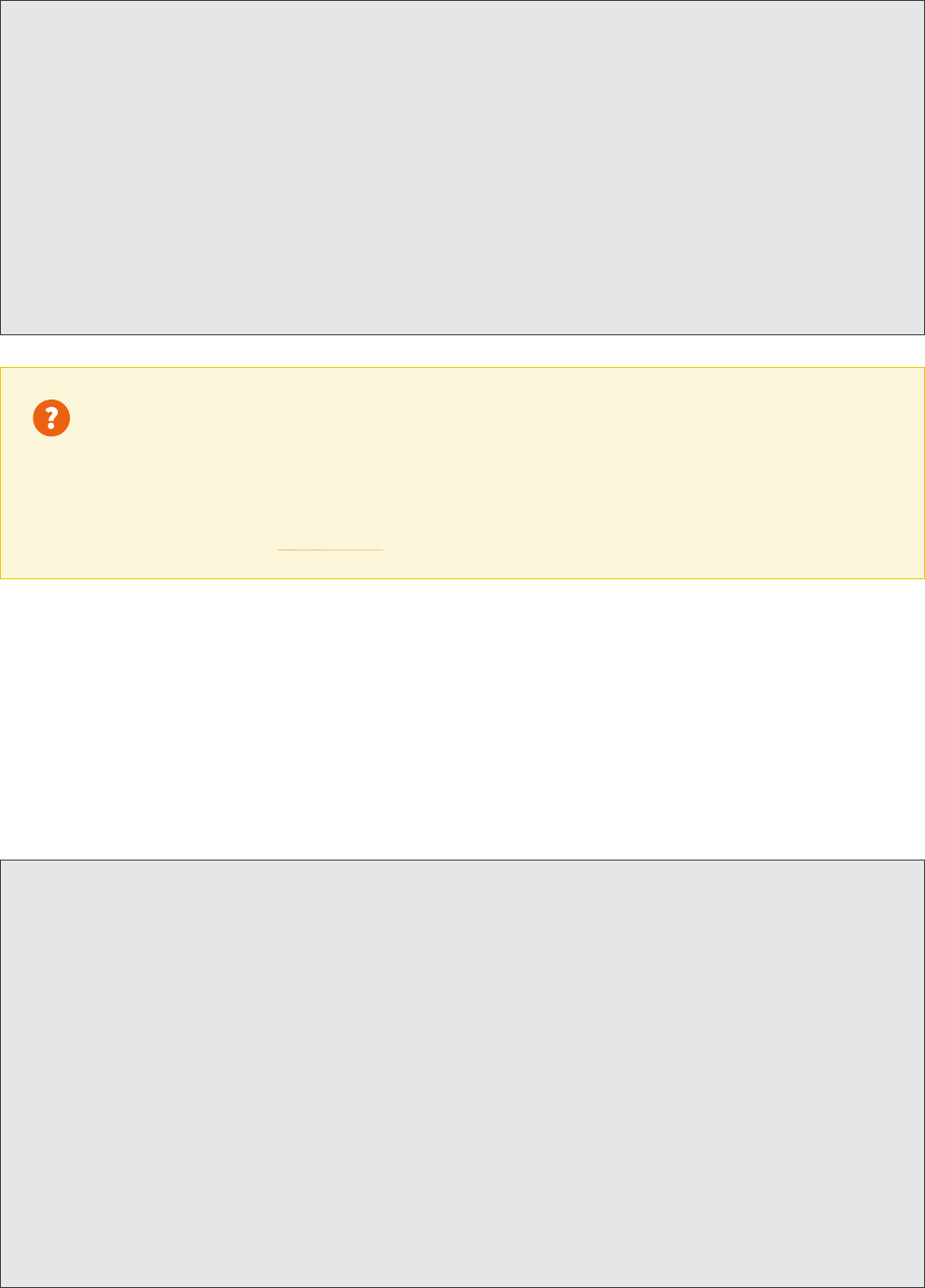
STAKEHOLDER CONSULTATION PAPER 31
Box 13: Recommendation (Minimum Performance Specifications)
CONSULTATION QUESTIONS
Q9: To ensure eective and safe insulation installation, does the above list of referenced standards need the
addition or removal of any items?
Please add your answers to the online survey.
6.2.2 ADDITIONAL REQUIREMENTS SPECIFIC TO INSULATION PRACTICE
As well as referencing relevant standards, dierent jurisdictions apply additional minimum installation requirements,
where standards are insuicient or where certain practices wish to be highlighted as important. These vary slightly in
scope and definition jurisdiction by jurisdiction. The inclusion of the additional requirements into the dra codes of
practice are proposed to ensure that important insulation installation practices (as relevant to ceiling and under-floor
insulation) are explicit in the EEIS legislation. Additional requirements proposed include:
Box 14: Recommendation (Minimum Performance Specifications - continued)
1. The minimum specifications for Activity 1.8 and Activity 1.9 to be a compliant eligible activity are the
minimum activity performance specifications in Schedule 1, Part 1.8 and 1.9 section 2 of the eligible
activities determination and the provisions in this Part of this code.
2. The installed insulation product shall meet the installed product requirements Schedule 1, Part 1.8 and 1.9
section 3 of the eligible activities determination.
3. The product must be installed in accordance with the manufacturer’s instructions and any other relevant
legislation and standards, including but not limited, to the requirements of the eective versions of AS 3999
and AS/NZS 3000 (as applicable). In particular, the safety, pre-inspection and risk assessment procedures,
electrical safety provisions and provisions for limiting moisture ingress of AS 3999 shall be observed.
1. [For underfloor insulation only] The insulation product must be securely fixed in place and adequately
supported to ensure that the product will remain in its intended position throughout the life of the product.
2. [For underfloor insulation only] - Ensure underfloor insulation is installed in a way that complies with termite
protection, sub-floor clearances, and ventilation requirements.
Note: Utilise an insulation cut-away if installation risks blocking wall vents.
3. [For ceiling insulation only] Cut outs around ceiling penetrations such as light emitting diode lighting (LEDs)
must be kept to the minimum permitted by regulation.
4. When installing insulation around or near electrical or mechanical appliances, other than recessed
luminaries, the authorized installer must ensure that installation of insulation does not impede the safe
operation of the equipment.
5. The undertaking of this activity shall not compromise the condensation management of the building.
Reference should be made to the provisions in the Australian Building Codes Board publication
“Condensation in buildings – Information handbook”.

32 ACT ENERGY EFFICIENCY IMPROVEMENT SCHEME (EEIS)
CONSULTATION QUESTIONS
Q10: Are the additional requirements listed above appropriate for ceiling and under-floor insulation activities?
Q11: Are there any other additional requirements that should be referenced?
Please add your answers to the online survey.
6.2.3 PRE-INSTALLATION RISK INSPECTION BY LICENSED ELECTRICIAN
As described in the HIP RC the installation of insulation carries significant risks both to the installer and the
householder, including risk of death by electrocution or loss of property through fire. In the course of installing
insulation, installers may encounter electrical hazards due to old or unsafe wiring. In addition, installers, without having
due consideration to the impact installed insulation might have on the existing wiring design, may make incorrect
installation decisions which may result increased risk of a house fire.
As a result, in addition to referencing insulation standards, several jurisdictions now require a pre-installation risk
inspection to be carried out by a licensed electrician. If electrical safety risks are found to be present, they must be
rectified prior to the installation of insulation. See Table 1 for a comparison or inspection requirements currently in
force in various jurisdictions for their current insulation programs.
While these requirements obviously have cost and logistical implications, the various jurisdictions recognize that the
risk reduction potential is considerable enough to warrant such requirements. It is proposed that, under the EEIS
for both Ceiling and Under Floor Insulation, a pre-installation risk assessment should be carried out by a licensed
electrician, with any electrical safety risks found to be present rectified prior to the installation of insulation. In the
development of the Minimum Performance Specifications two further issues were considered.
Firstly, the HIP RC reported that in relation to the risk of house fire, the presence of high heat emitting downlight
fittings in a ceiling space to be insulated significantly increases the risk of house fire if insulation is installed without
suicient clearance. This is especially the case with halogen downlights where the heat emitted can reach very high
temperatures.

STAKEHOLDER CONSULTATION PAPER 33
Table 3: Comparison of State Insulation Schemes – Sample of Pre and Post Insulation Installation Safety Requirements
19
PROGRAM OUTLINE AMBITION, TIMING PRE-INSTALLATION ELECTRICAL
SAFETY CHECK
SAFETY COMPETENCY REQUIREMENTS – INSULATION
INSTALLERS
POST INSTALLATION AUDITING
Stay Warm SC (SWSC) Program,
NSW
The SWSC program provides
insulation upgrades to
households in the Riverina
region.
Reached ~700 households between April
2010 and August 2013.
Pre-installation electrical safety
inspection, by a licensed electrician.
Insulation installers have to have received training in how to
identify and manage electrical safety risks. They have a duty
to still check, identify and report any electrical risks in line
with the installation Australian Standard (AS3999:2015).
All programs require insulation installers to have Clean Energy
Council Insulation Installer Accreditation.
Clean Energy Council Accredited Insulation Installer Training
requirements.
Installers must have received training on the full content of
the bulk thermal insulation–installation Australian Standard
(AS3999:2015). On completion of this training, installers
must demonstrate their achieved competency by passing a
comprehensive written and practical assessment.
The course covers five units of competency from the
Certificate III in Wall and Ceiling Lining (CPC31211):
→ CPCCOHS2001A Apply OHS requirements, policies and
procedures in the construction industry
→ CPCCCM1015A Carry out measurements and calculations
→ CPCCCM2010B Work safely at heights
→ CPCCPB3014A Install batt insulation products
→ CPCCPB3027A Install ceiling insulation.
To receive standard ceiling accreditation, installers will have
to complete the industry training (units from the Certificate
III in Wall and Ceiling Lining as listed in Section 7.1), provide
evidence of three completed ceiling insulation jobs and pay
an annual subscription fee. For further information on the
CEC insulation accreditation program and accreditation
process.
The first 3-5 jobs are audited for new
installers immediately by insulation
auditors (not electricians) to ensure
they are following protocols. Then the
program moves to, “10% of insulation
jobs have an onsite audit/ inspection
and report conducted by an NSW
Government approved contractor/s
who is independent of the insulation
contractor/s.”
Home Energy Action –
Community Housing, NSW
The HEA program is designed
to deliver energy eiciency
improvements to households in
need, across NSW.
Upgraded ~2500 community housing
properties (dwellings) in 2016–17.
Pre-installation electrical safety
inspection, by a licensed electrician.
Latrobe Valley – Energy Upgrade
Program
Targeting low income
households/households with
disability.
Provides energy assessment.
If insuicient insulation,
insulation is provided as part of
the upgrades.
100 insulation upgrades in total Pre-installation safety check by insulation
installers with Clean Energy Council
Insulation Installer Accreditation to
comply with the Australian Standard
(AS3999:2015) for bulk insulation
installations.
DELWP / Sustainability Victoria
Partnership to deliver.
Audit of the first 3-5 installs of each
installer. 20-25% of the 100 to be audited.
No licensed electrician
Aordable retrofits program,
DELWP
100 homes Licensed electrician does the pre-
installation inspection.
100% audited
Specialist insulation auditor
Healthy Homes, Victoria –
Sustainability Victoria
Energy assessment to identify
need. Insulation upgrade is
delivered by an independent
company hired by Sustainability
Victoria.
1000 to be delivered in 2018-2019
Mid 2018 start
Clean Energy Council accredited
Insulation Installers undertake the
electrical safety check to comply with the
Australian Standard (AS3999:2015) for
bulk insulation installations.
Insulation auditors.
10-20% of all upgrades.
This equates to the first 2 jobs by each
installer – and possibly one addition one.
19 Note: All Schemes do not use foil insulation, all retain direct control - over procurement processes and standards through programs.
34 ACT ENERGY EFFICIENCY IMPROVEMENT SCHEME (EEIS)
Access Canberra has recommended that requiring halogen lights, where
present in a ceiling area to be insulated, be replaced with light emitting
diode (LED) fittings prior to the ceiling insulation activity taking place. It is
recommended for the following reasons:
→ In most cases, with consideration for transformer type and location, ceiling
insulation can be placed closer to LED down lights than halogen lighting
improving overall ceiling thermal insulation performance. This is because
halogen lighting requires larger diameter holes to be cut in the insulation
batts around halogens downlights to ensure code compliance. By requiring
large clearance holes for halogen downlights the eective R-value of the
insulation installations can be significantly reduced. Leaves which enter a
roof space can concentrate in these clearance holes above halogen lighting
and could pose a fire risk. Hence using LEDs also reduces this risk.
→ Installing LED lighting significantly reduces the power draw on the ceiling
electrical circuit. This reduces the risk that ceiling insulation installation will
require the de-rating of a relevant aected ceiling electrical circuit.
So, it is proposed that removing the highest heat emitting downlights
(halogens) from a ceiling space prior to insulation will significantly reduce the
risk of house fire. Secondly, in relation to electrocution, RCDs were raised by
the HIP RC as one means by which the risk of electrocution is minimised
20
,
and the HIP RC made the recommendation that homes predating the 2007
Wiring Rules should be fitted with RCDs to replace existing fuses or circuit
breakers
21
. So, it is also proposed that with a licensed electrician on site there
is value in reducing the risk of electrocution to the installer and householder
by requiring a Residual Current Device (RCD) installed, if the house does not
already have one.
20 RCD’s have been required for some, but not all, circuits in domestic dwellings since the 1991 edition of the Wiring Rules. However, a relatively recent addition to the Wiring
Rules in 2007 extended the RCD requirement to all circuit.
21 See p 316 - Report of the Royal Commission into the Home Insulation Program (September 2014)
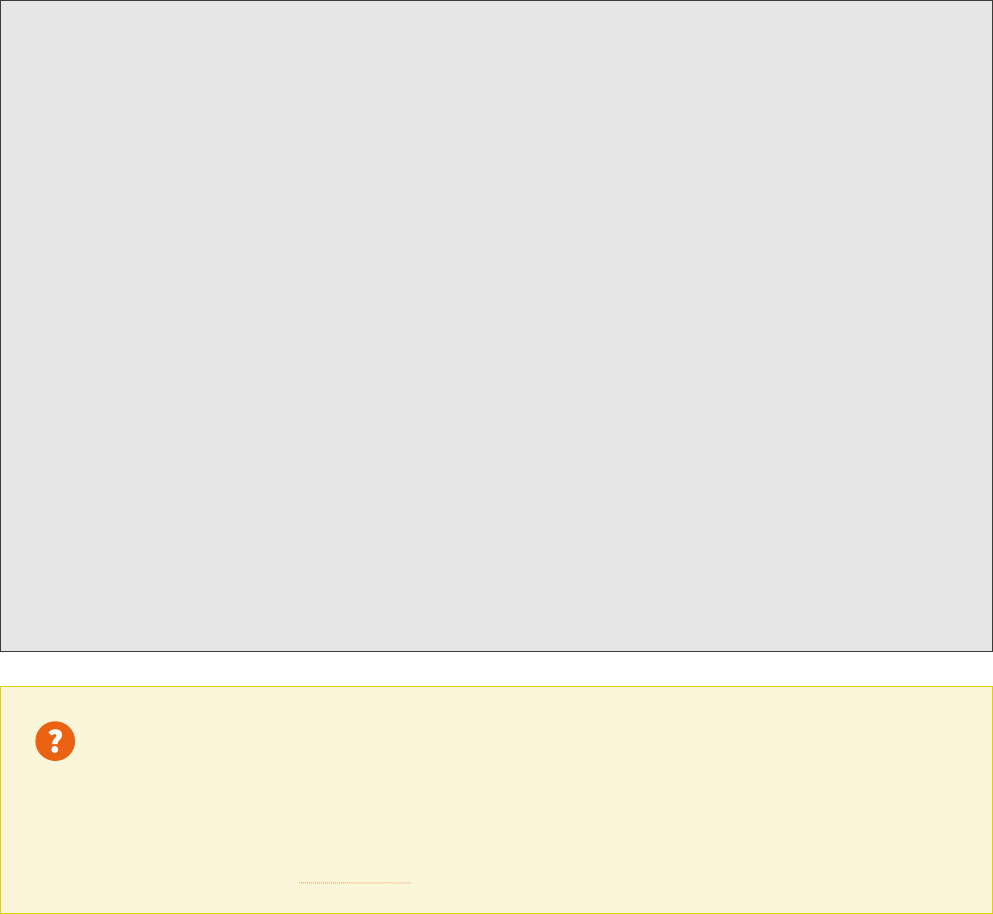
STAKEHOLDER CONSULTATION PAPER 35
6.2.4 RISK ASSESSMENT AND ELECTRICAL SAFETY BY INSULATION INSTALLERS
In addition to having the workspace checked by a Licensed Electrician for safety risks, installer injury can be
significantly reduced by careful and pro-active risk assessment and safe installation practices being carried out by
the insulation installer. While AS 3999 has provisions for risk assessment procedures, and electrical safety provisions,
the following requirements have been included in the dra Eligible Activities Codes of Practice to ensure installers are
provided explicit requirements under the EEIS.
Box 15: Recommendation (Minimum Performance Specifications - continued)
9. Prior to the installation of ceiling insulation, insulation installer(s) must undertake a safety check aligned
with the Electricity Retailer’s SWMS for this activity
22
. As part of this the insulation installer needs to pro-
actively manage risks, which can include, but are not limited to,
a. working at heights,
b. falling through ceilings,
c. working in a poorly ventilated workspace in hot weather,
d. working in confined spaces,
e. materials handling, and exposure to hazardous materials including asbestos.
f. electrocution by recording the source of electrical power to the home, and any related power equipment
such as solar power. They need to also:
g. de-energise and isolate power at the mains,
h. test for de-energisation by checking the lights and testing the cables and power points with a voltage detector,
i. implement lock out and tag before installation.
j. other OH&S risks by including appropriate workplace health and safety risk control measures as
appropriate. For instance;
k. If the licensed electrician has not checked and reported airmatively or negatively on the presence of a
flueless gas appliance, or a gas connection that could be used for a flueless gas appliance in the room, the
insulation installer needs to double check for their presence and report on it. If either are present, then the
residential premises is not eligible for this activity.
CONSULTATION QUESTIONS
Q12: To ensure safe insulation installation practices, does the above list of risk assessment procedures, and
electrical safety provisions to be carried out by the installer need the addition or removal of any items?
Please add your answers to the online survey.
22 EEIS Tier 1 and Tier 2 Electricity Retailers must submit SWMS as part of their compliance plan to the EEIS administrator to undertake this activity.
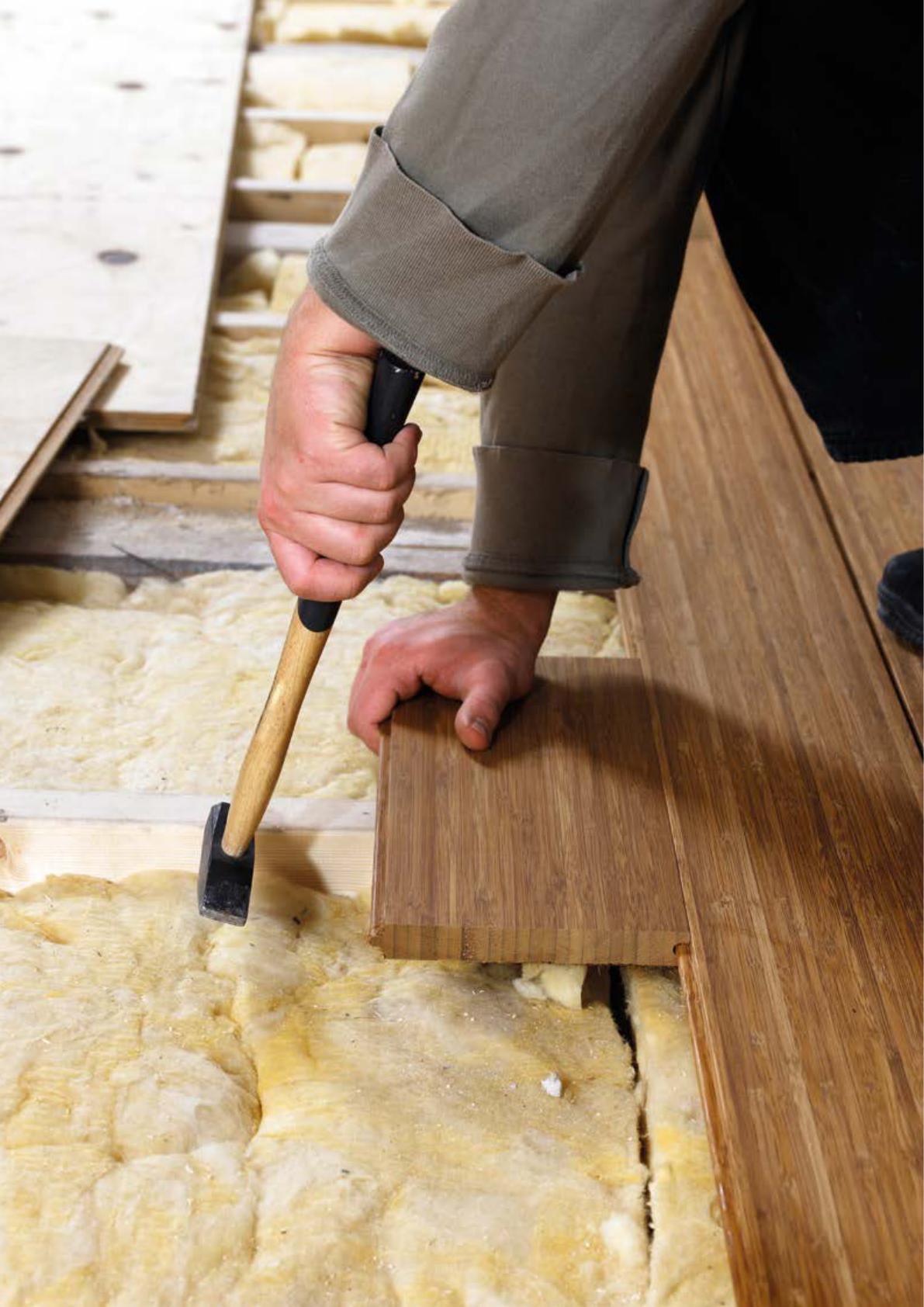
36 ACT ENERGY EFFICIENCY IMPROVEMENT SCHEME (EEIS)
STAKEHOLDER CONSULTATION PAPER 37
7. PROPOSED RECORD
KEEPING AND REPORTING
CODE OF PRACTICE (CEILING
AND UNDER-FLOOR
INSULATION)
7.1 ITEMS TO BE RECORDED
To enable evidence that the activity was carried out in accordance with legislative requirements, and ensuring that
insulation correctly and safely installed the Record Keeping and Reporting Code of Practice for ceiling and under-floor
insulation has requirements for the following records to be collected:
→ Activity details – Activity Item, time/date of installation, residential premises address;
→ Installed Product – Product name, type of insulation, R-Value, and warranty period;
→ Area insulated;
→ Value of services;
→ Evidence of the conditions prior to insulation including whether the ceiling was uninsulated or under-insulated;
→ Suitable evidence that a pre-installation electrical safety check was eectively carried out and signed o by a
Licensed Electrician;
→ This pre-installation electrical safety checklist needs to evidence, but not limited to, the following:
> Evidence of no unsafe wiring;
> Evidence the wiring was rated correctly;
> Evidence that the installation of insulation will not lead to any electrical wiring or circuits being adversely aected;
> Evidence that if electrical safety risks found, appropriate remediation works were undertaken;
> If incandescent or halogen downlights were encountered, evidence that these were converted to LED downlights,
in accordance with EEIS Activity 4.1, prior to the insulation installation component of this activity;
> Evidence that if any halogen downlights or incandescent lighting were present that a LED conversion was
undertaken [Ceiling Insulation Activity 1.8 only];
> Evidence that if any iron core transformers were present that the transformer were lied above the ceiling and
clipped securely to a truss member; and
> Evidence that a RCD has been fitted if one was not present to the relevant circuit aected by the insulation
installation;
→ If no electrical work was needed then no Certificate of Electrical Safety (CES) is needed.

38 ACT ENERGY EFFICIENCY IMPROVEMENT SCHEME (EEIS)
→ A Certificate of Electrical Safety needs to be provided if the licensed electrician has undertaken any of the following:
> Fixed unsafe wiring,
> Upgraded the lighting with LEDs,
> Lied up and securely clipped iron core transformers, and
> Re-rated the circuit and its cables.
→ The CES needs to evidence that the requirements of the eective versions of AS 3999 (as applicable)
were complied with;
→ Evidence that the household occupant has agreed not to climb into or allow access to their roof aer the licensed
electrician has finished their work and before the insulation installer arrives associated with this activity.
→ Evidence that the residential premises occupant and, where dierent, the owner have been informed of the work
done and any safety issues addressed.
→ Evidence that OHS requirements were adhered to in accordance with the Electricity Retailers safe work method
statement (SWMS) for both the licensed electrician and insulation installer as part of the retailer’s compliance plan,
→ Evidence that the mains power was turned o, locked out and tagged during the installation;
→ Evidence that the relevant standards were adhered to;
→ Evidence of the ceiling space or underfloor space being eectively insulated at activity completion including, but not
limited to, geotagged photos;
→ For underfloor insulation, geotagged photo evidence that underfloor insulation is installed in a way that complies
with termite protection, sub-floor clearances, and ventilation requirements;
→ Evidence of the Clean Energy Council Insulation Installer Accreditation,
→ The abatement factor for the activity calculated in accordance with Schedule 1 Part 1.8 section 5 of the eligible
activities determination as in force at the time the activity was completed;
→ The date of implementation, being the date all prescribed activity requirements are completed, and
→ Evidence that the residential premises tenant or owner were present for and satisfied with insulation installation
services provided under this activity.
CONSULTATION QUESTION
Q13: To ensure adequate Record Keeping for insulation activities are there any other items to the list in 7.1
that need to be added or removed?
Please add your answers to the online survey.

STAKEHOLDER CONSULTATION PAPER 39
7.2 HARMONISATION WITH
OTHER SCHEMES
The record keeping requirements for insulation
mirror the requirements of the NSW Home Energy
Action and Stay Warm Stay Comfortable programs.
If electricity retailers and their approved providers
decide to deliver EEIS insulation activities, the
combination of having both a licensed electrician
and a licensed accredited insulation installer visiting
residential premises means that retailers could also
choose to simultaneously undertake other EEIS
building sealing related activities to gain additional
abatement. This could include also delivering
aspects of Activity 1.1 - Dra-stopper upgrades,
Activity 1.2 - Exhaust fan seal upgrades, Activity
1.3 - Sealing any gaps/ventilation openings, Activity
1.6 - Thermally eicient window coverings as well
as Activity 4.1 - Residential lighting in residential
premises, where appropriate.
In 2016 and 2017 legislative updates, the EEIS
reviewed and updated codes of practice of all EEIS
building sealing activities, except for EEIS Building
Sealing Activity 1.3. So as part of this project codes of
practice for Activity 1.3 have been developed the first
time. This is discussed below in sub-section 8.
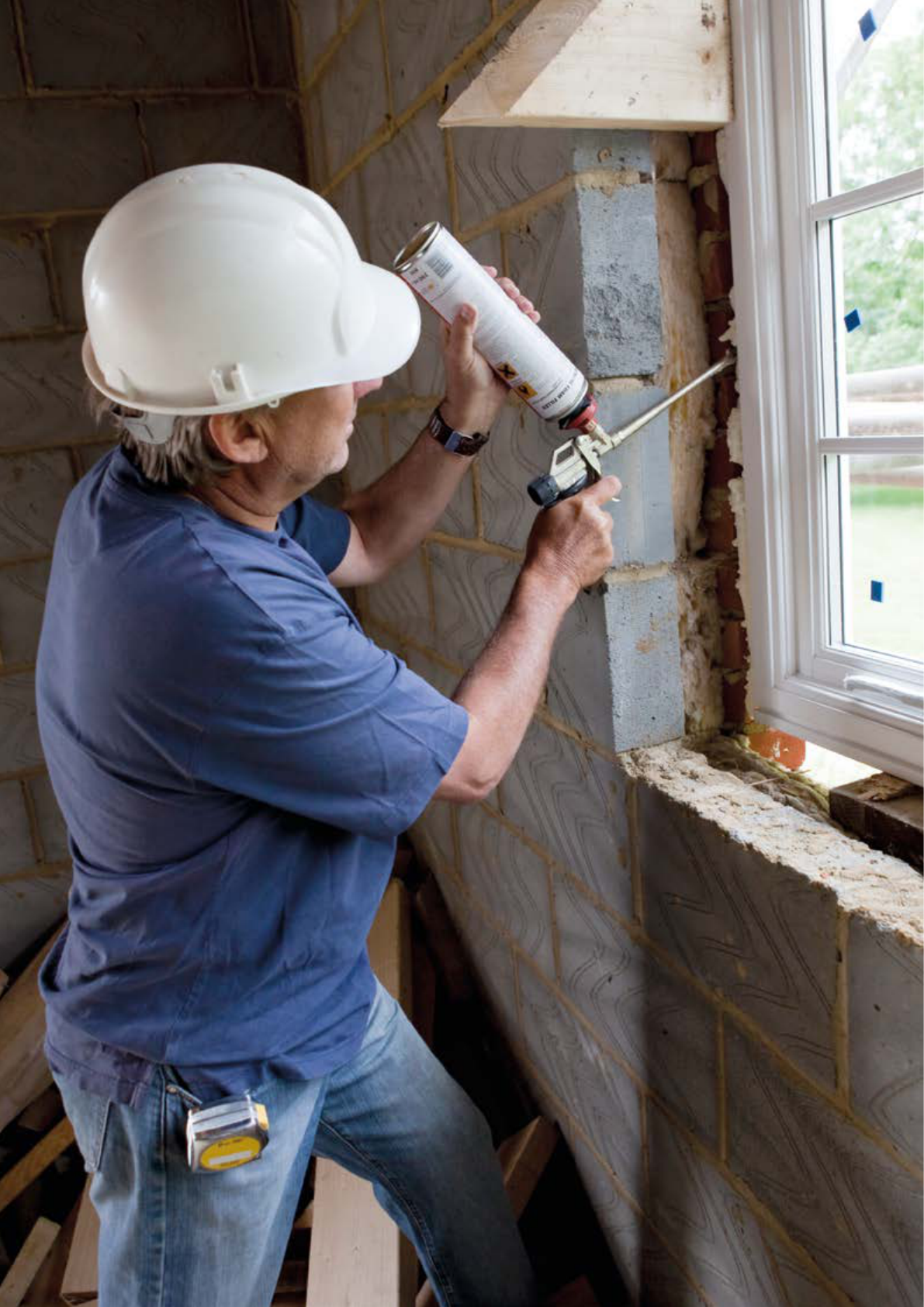
40 ACT ENERGY EFFICIENCY IMPROVEMENT SCHEME (EEIS)
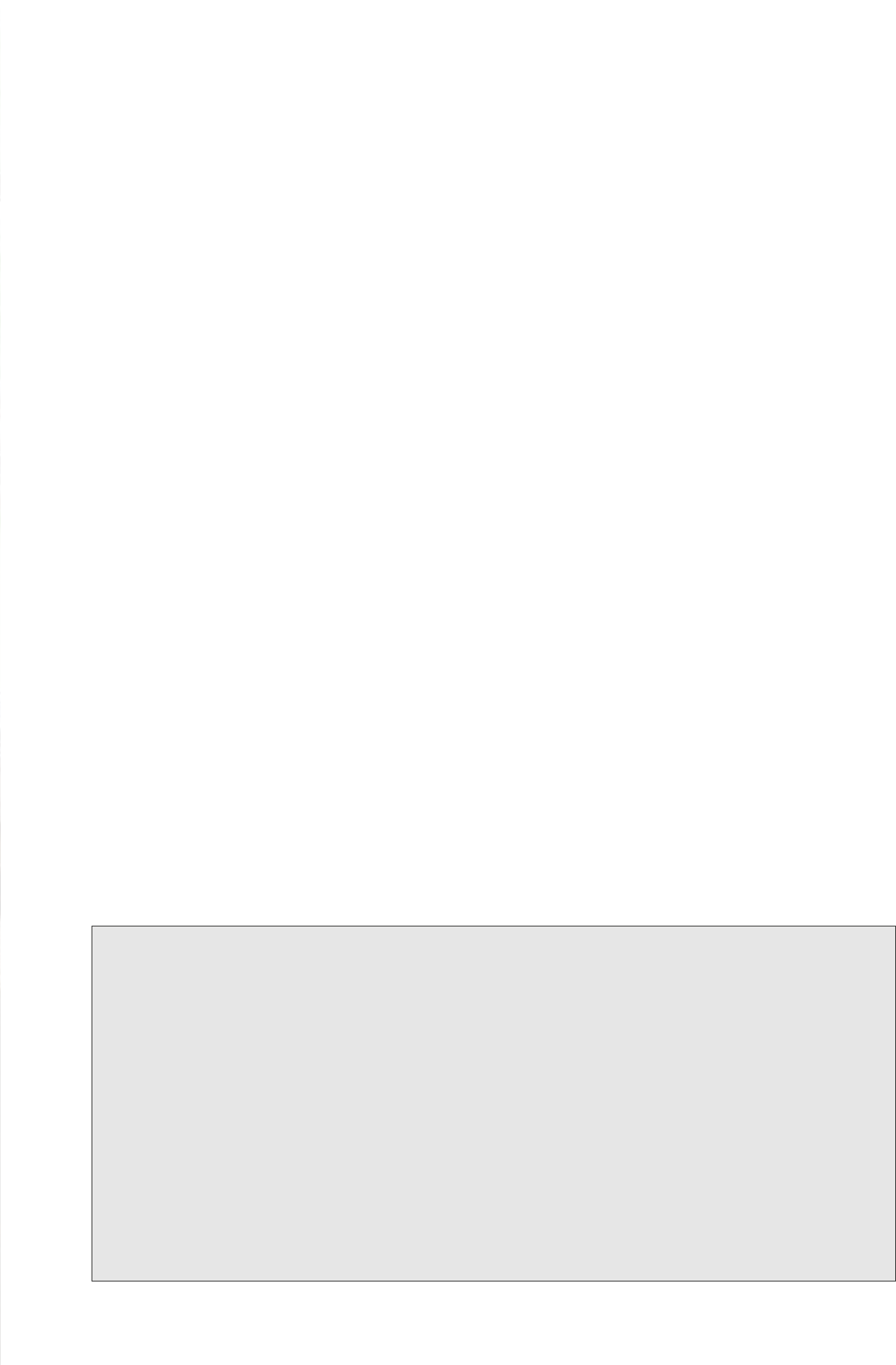
STAKEHOLDER CONSULTATION PAPER 41
8. PROPOSED ELIGIBLE
ACTIVITIES AND RECORD
KEEPING AND REPORTING
CODES OF PRACTICE
(VENTILATION OPENING
SEALING)
EEIS Activity 1.3 is defined as an activity that restricts the air infiltration into, or air leakage out of, a premises by carrying
out one or more of—
a. Activity ID 1.3(a) – installing a sealing product or products to permanently seal ventilation openings in an external
wall, other than external wall openings to under-floor enclosures; or
b. Activity ID 1.3(b) – installing a damper or flap in a chimney or flue of an open solid fuel burning appliance that can be
closed to seal the chimney or flue. The EEIS Determination for Activity 1.3 is already legislated and is available here.
Dra Activity 1.3 Eligible Activities Codes of Practice has been developed for consultation and are discussed next.
8.1 COMPETENCY REQUIREMENTS
Due to the similar nature of activity characteristics, the Competency Requirements for Activity 1.3 Ventilation Opening
Sealing aligns with the requirements of Activity 1.1 Building sealing activitiesand Activity 1.2 Exhaust fan sealing activities.
Box 16: Recommendation (Competency Requirements)
1. Activity 1.3 (a) and (b) must be carried out by an authorised installer who has—
a. completed all required training prescribed in Part 4 of this code; and
b. is suiciently trained to carry out the relevant activity and hasall relevant competencies to undertake the
activity including, but not limited to, competency in—
i. for Activity 1.3 (a), the physical practice of installinga sealing product or products to permanently
seal ventilation openings in an external wall; or
ii. for Activity 1.3 (b), the physical practice of installing a damper or flap in a chimney or flue of an open
solid fuel burning appliance;
iii. determining and identification of whether or not work would need to be done in a confined space or
at heights;
iv. identifying whether there is a standard flueless gas appliance or a gas connection that could be used
for a flueless gas appliance in the room; and
Note: ‘Flueless gas appliances’ can include gas cooktops/stoves.
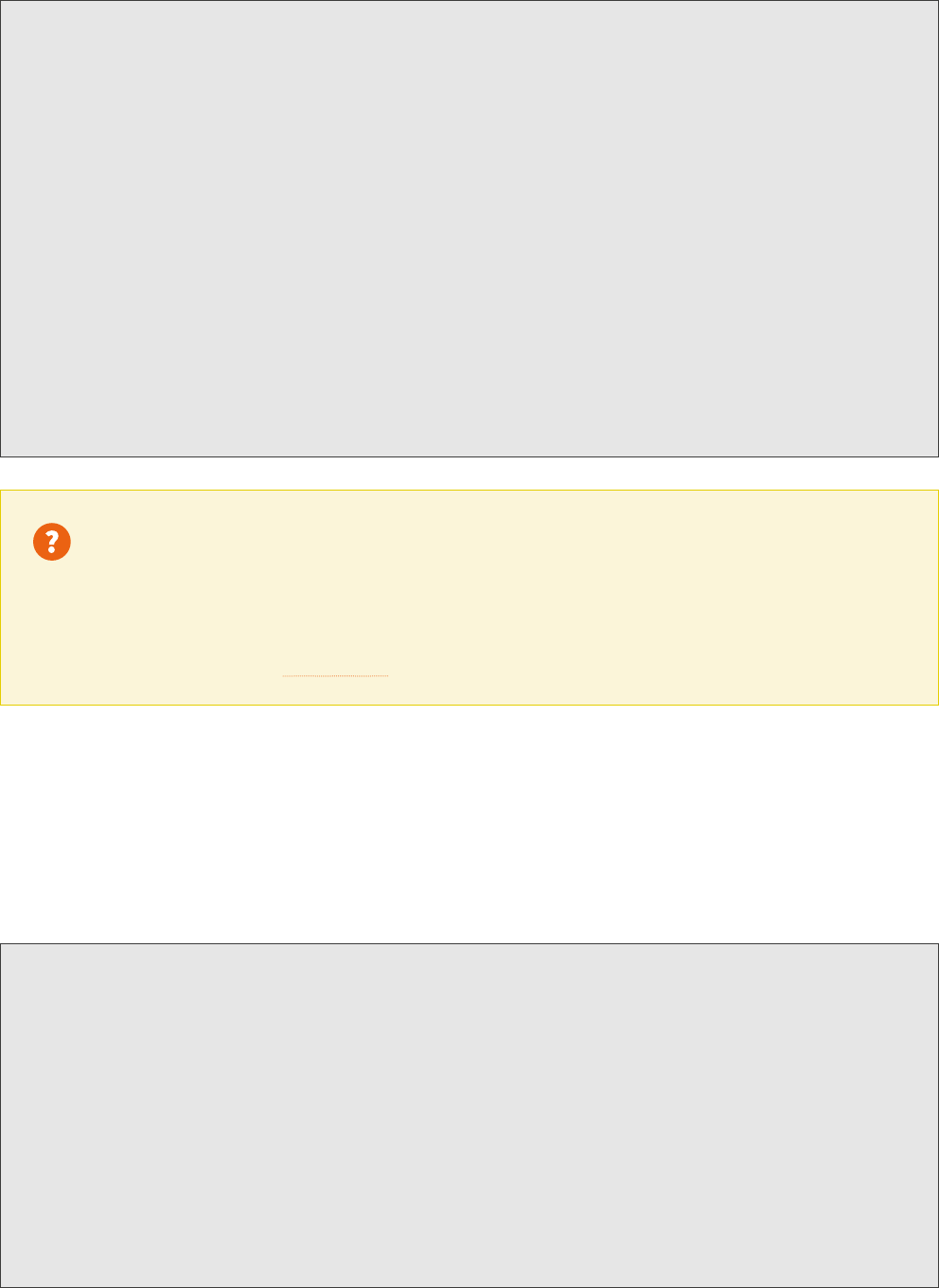
42 ACT ENERGY EFFICIENCY IMPROVEMENT SCHEME (EEIS)
v. understanding ventilation requirements in the building code and AS/NZS 5601;
vi. understanding and communicating to consumers the needs for adequate ventilation to avoid
condensation in buildings, as detailed in a range of handbooks (see note).
Note: Relevant handbooks on condensation include the Handbook: Condensation in Buildings by the Australian Building Codes Board; Tasmanian
Government’s Condensation In Buildings: Tasmanian Designers’ Guide.
vii. If the activity requires working at heights, the authorised installer must have completed RIIWHS204D
“Work safely at heights” or an equivalent preceding unit of competency, either completed within
the last 3 years or have obtained a Certificate of Attendance for an “Work safely at heights” refresher
course within the last 3 years.
viii. If the activity requires entering the ceiling cavity, the authorised installer must also have completed
RIIWHS202D “Enter and work in confined spaces” or an equivalent preceding unit of competency,
either completed within the last 3years or have obtained a Certificate of Attendance for an “Enter
and work in confined spaces” refresher course within the last 3 years; and
Note: The authorised installer must have completed 10314NAT “Asbestos awareness” or an equivalent course.
CONSULTATION QUESTION
Q14: To ensure eective and safe ventilation sealing installation, does the above list of competency
requirements need the addition or removal of any items?
Please add your answers to the online survey.
8.2 MINIMUM ACTIVITY PERFORMANCE SPECIFICATIONS
Due to the similar nature of activity characteristics, the Minimum performance specifications for EEIS Activity 1.3
Ventilation Opening Sealing aligns with the requirements of EEIS Activity 1.1 Building sealing activitiesand EEIS Activity
1.2 Exhaust fan sealing activities. The following minimum performance specifications are proposed.
Box 17: Recommendation (Minimum Performance Specifications):
1. The minimum specifications for Activity 1.3 to be a compliant eligible activity are the minimum activity
performance specifications in Schedule 1 Part 1.3, section 2 of the eligible activities determination and the
provisions in this Part of this code.
2. The installed product shall meet the installed product requirements Schedule 1 Part 1.3, section 3 of the
eligible activities determination.
3. Installed ventilation opening sealing products must be permanently fixed.
4. A ventilation opening sealing activity must not be carried out in a room that contains a flueless gas appliance.
5. If the installer is not sure whether an existing appliance is flueless the installer must not install ventilation
opening sealing products.
Note: If the activity is being undertaken with the installation of a gas space heater under Activity 2.3, the heater must be flued.

STAKEHOLDER CONSULTATION PAPER 43
6. If a ventilation opening sealing product is installed in a room that does not contain a flueless gas appliance,
but in which there is a connection that could be used for a flueless gas appliance, the installer must inform
the consumer that there may be inadequate ventilation to install a flueless gas appliance.
7. The authorised installer must ensure that the installation—
a. for rooms with gas appliances, complies with AS/NZS 5601 Section 6.4 Air supply to gas appliances; and
b. is unlikely to cause excessive condensation in the building.
Notes:
1 If the eligible activity is undertaken in association with other eligible activities or other work in the premises the installer must make sure that the
combination of the work does not result in air changes and ventilation that does not comply with the minimum standards.
2 Inadequate ventilation can cause health problems for occupants. An installer must not reduce the ventilation below the standards set for occupant health
and amenity.
3 Structural and other problems can occur due to regular condensation that forms in a well-sealed and insulated building if inadequate ventilation is not
available to allow the moist air to escape. This is more likely to occur in houses that are new or extensively renovated of if a retailer is simultaneously
implementing EEIS insulation, building sealing, exhaust fan seal activities in addition to this ventilation opening sealing activity. Further information on
condensation can be found in the Condensation in Buildings: Information Handbook 2011 published by the Australian Building Codes Board and located at
www.abcb.gov.au
8. The authorised installer must verify that the installation is unlikely to cause excessive condensation in the
building and communicate to consumers the needs for adequate ventilation to avoid condensation in buildings.
9. If the installer is not sure that the installation maintains required air changes and ventilation the installer
must consult—
a. for a room containing a gas appliance, an individual with an advanced gasfitter licence; or
b. for any rooms not containing a gas appliance, an individual with a building surveyor licence in an
appropriate occupation class.
3. The authorised installer must test all products aer the installation of a ventilation opening sealing product
to verify that the product—
a. is correctly installed; and
b. is operating correctly.
CONSULTATION QUESTION
Q15: To ensure eective and safe ventilation opening sealing installation, does the above list of minimum
performance specifications need the addition or removal of any items?
Please add your answers to the online survey.
The EEIS Eligible Activities Determination and Codes of Practice for Record Keeping and Reporting for Activity 1.3 have
already been developed and previously legislated hence there is no need to discuss these here.
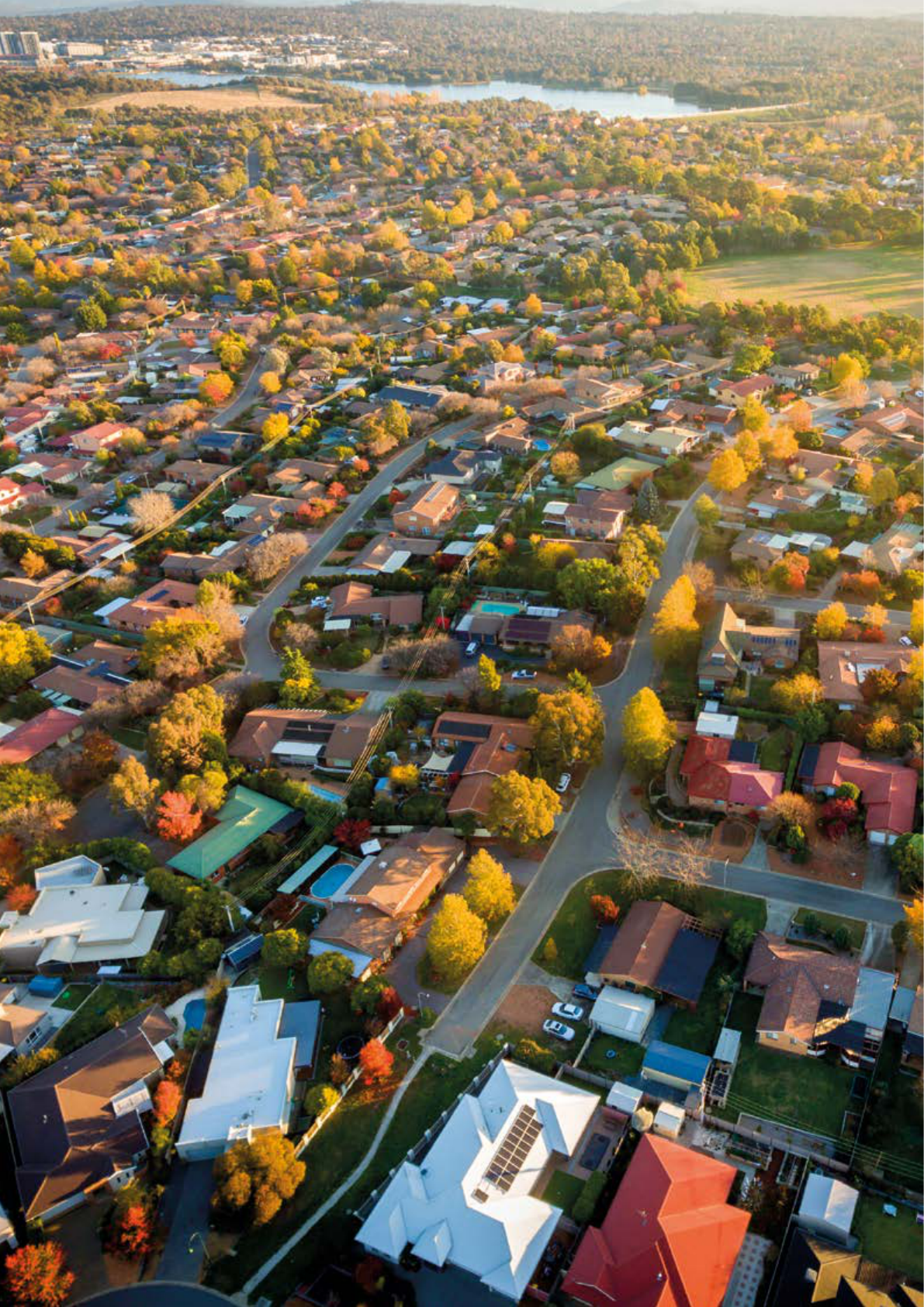
44 ACT ENERGY EFFICIENCY IMPROVEMENT SCHEME (EEIS)
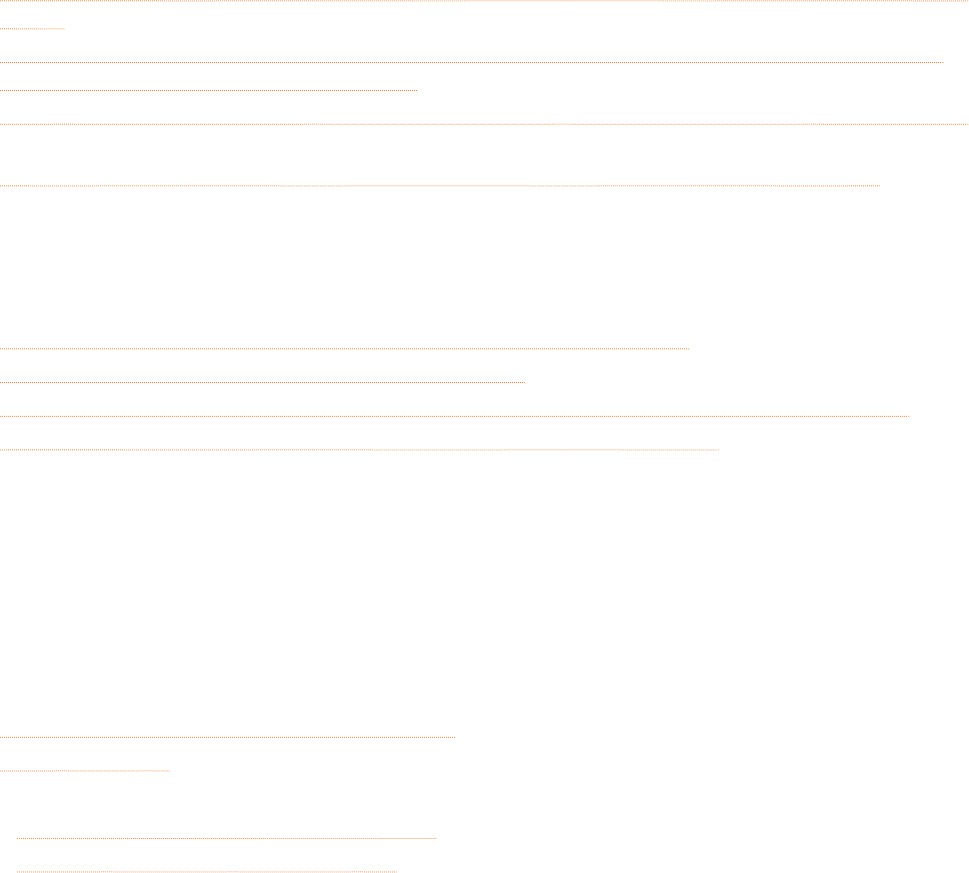
STAKEHOLDER CONSULTATION PAPER 45
9. APPENDIX – KEY SOURCES
9.1 REFERENCES
Insulation Installation Risk Analysis and Risk Management Options – National and State Reviews are available as
follows:
→ Government reviews of government insulation programs including the Home Insulation Program Royal Commission
(HIPRC)
→ NSW Government (2017) Install Insulation Safely - Administrative and governance arrangements for Home Energy
Action and Stay Warm Stay Comfortable programs
→ ESC/VEET (2017) Proposed insulation administrative requirements consultation report and stakeholder submissions
(Closed 5th Feb 2017)
→ KPMG (2015) Review of Ceiling Insulation and the Victorian Energy Eiciency Target. Victorian Government
The ACT EEIS – Ceiling and Underfloor Insulation Determinations Consultation Paper is available on the EEIS website.
South Australian REES - Insulation Activities Codes of Practice, Technical Report and Customer Protection forms are
available as follows.
→ REES - Insulation activity (ceiling, wall, ceiling top up and underfloor) specifications
→ REES – Insulation activity specifications –Gazette for Jan 1 2018
→ Energy Eicient Strategies (2014) Review of Residential Energy Eiciency Activities under the SA REES Scheme
→ REES – Insulation Activities – Installer Declaration Forum to Assist Customer Protection
9.2 INSULATION RELATED TRAINING
→ Prepare to work safely in the construction industry (CPCCOHS1001)
→ Work safely at heights (CPCCM2010B)
→ Apply OHS requirements, policies and procedures in the construction industry (CPCCOHS2001A)
→ Install ceiling insulation (CPCCPB3027A)
→ Install batt insulation products (CPCCPB3014A).
→ Clean Energy Council Insulation Installer Accreditation
→ Installer information is available through ICANZ.
→ ICANZ insulation training resources are as follows:
> Insulation Handbook Part 1: Thermal Performance – Total R-value calculations Version 3.
> Insulation Installation Guide Handbook Part 2 - Version 4.
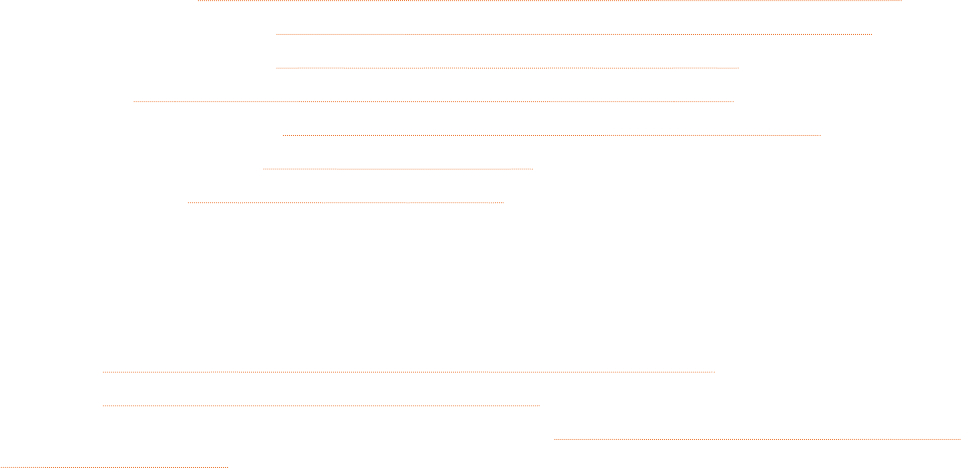
46 ACT ENERGY EFFICIENCY IMPROVEMENT SCHEME (EEIS)
9.3 INSULATION TECHNICAL, ECONOMIC COST/BENEFIT STUDIES
AND RESIDENTIAL INSULATION DATA
→ AWCI and others (2016) Cost-Optimal Levels of Insulation for Australian and New Zealand Residential Houses.
→ Energy Eicient Strategies (2012) The Value of Insulation Based Residential Energy Savings. ICANZ Report.
→ Energy Eicient Strategies (2011) The Value of Ceiling Insulation. ICANZ report – Available.
→ Isaacs, T. (2004) The Energy Eiciency Gap: Market failures and policy options – Available
→ Deloitte Insight Economics (2007) The Economic Benefits of Retrofitting Insulation in Australia 2012.
→ Commonwealth Government – Your Energy Savings – Insulation.
→ International Report – NZ Insulation Home and Health Study.
→ ABS (Australian Bureau of Statistics) 2011, Environmental issues: energy use and conservation, Report
No.4602.0.55.001, March 2011.
9.4 BUILDING SEALING - VENTILATION OPENING SEALING
→ VEET (2015) Modelling the future VEET certificate market for residential-type measures.
→ VEET (2015) Proposed Activity Regulation Changes, October 2015.
→ Energy Eicient Strategies for South Australian Government (2014) Review of Residential Energy Eiciency Activities
under the SA REES Scheme.

© Australian Capital Territory, Canberra 2019
This work is copyright. Apart from any use as permitted under the Copyright Act 1968,
no part may be reproduced by any process without written permission from:
Director-General, Environment, Planning and Sustainable Development
Directorate, ACT Government, GPO Box 158, Canberra ACT 2601.
Telephone: 02 6207 1923
Website: www.environment.act.gov.au
